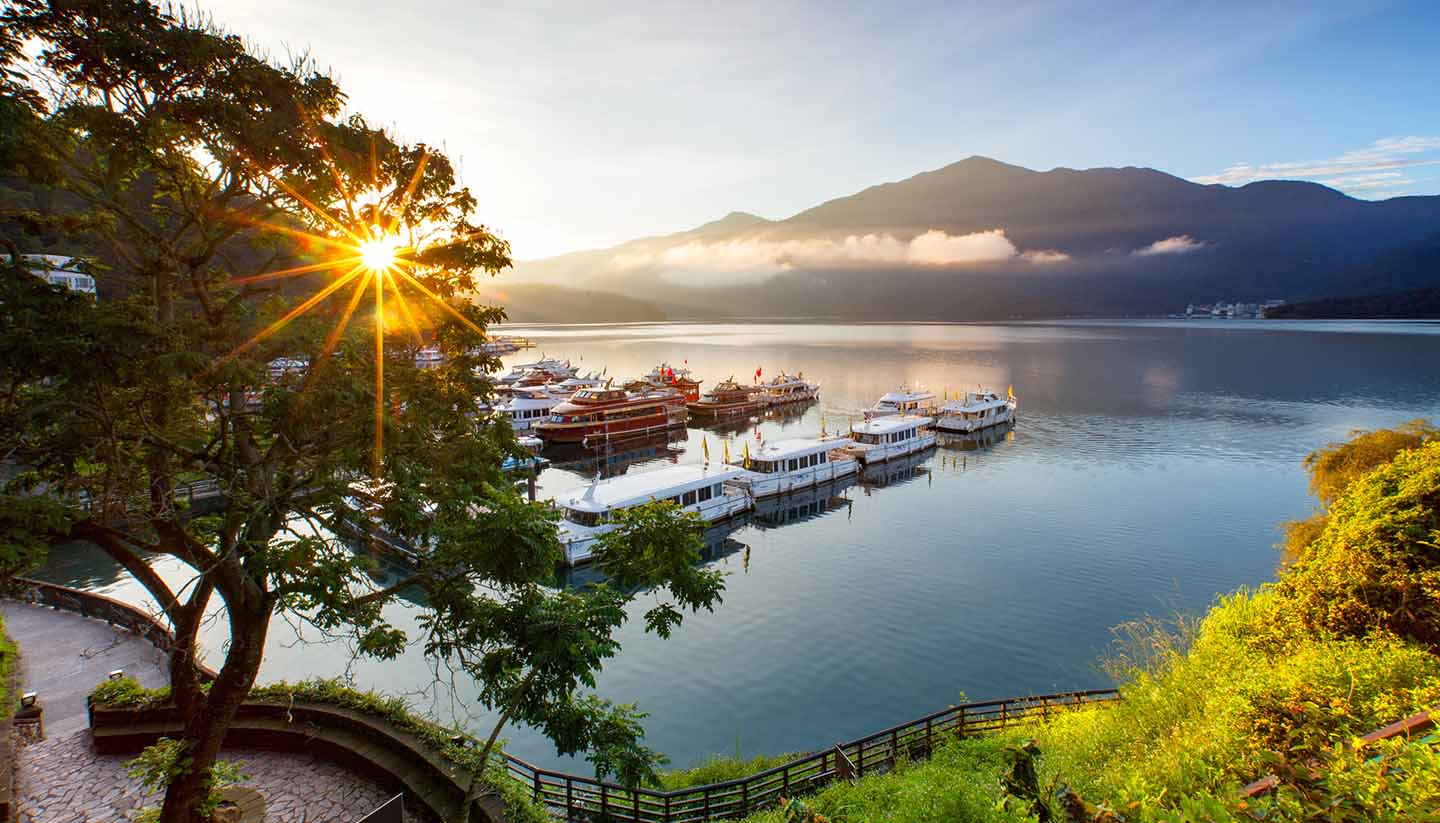

Introducing Taiwan
About taiwan.
- Images of Taiwan
- History, language & culture
- Weather & geography
- Doing business & staying in touch
Plan your trip
- Travel to Taiwan
- Where to stay
While you’re there
- Things to see & do
- Shopping & nightlife
- Food & drink
- Getting around
Before you go
- Passport & visa
- Public Holidays
- Money & duty free
Book your flights
- Taiwan Taoyuan International Airport
Taiwan travel guide
Sitting pretty as one of Asia’s best-kept travel secrets, the spicy, scenic island of Taiwan makes a habit of smashing visitor preconceptions.
Outsiders tend to see this country as notable only for its technological prowess – an image reinforced by the global prominence of ‘Made in Taiwan’ stickers – but in reality this is a destination that serves up awe-inspiring panoramas, a rainbow of different cultures and a startlingly rich history.
Alongside night markets, cycle trails and hot springs, there are gleaming skyscrapers, hulking mountains and sparkling lakes. When you factor in the manageable size of the island, which is less than half the size of Scotland, the appeal becomes even more significant.
Taiwan is one of the few places on Earth where ancient religious and cultural practices still thrive in an overwhelmingly modernist landscape. This juxtaposition is expressed most clearly in Taipei, where futuristic marvels like Taipei 101 – one of the tallest buildings in the world – share the city with incense-fogged temples and indigenous communities.
This mix of different influences is wonderfully showcased by the island’s cuisine – a lip-smacking blend of Chinese, Japanese and aboriginal fare.
Like many aspects of life in Taiwan, its diverse cuisine makes sense when you look at the island’s history. Following five decades of Japanese rule, in 1949 a liberated Taiwan became a refuge for the Chinese Nationalist Party and their supporters, who fled here during the Chinese Civil War. To this day, Taiwan remains a product of this period – a maverick sovereign state still viewed with uneasiness by Beijing.
History buff or not, there’s much to enjoy in Taiwan. Away from the sleek towers of the cities, it’s the valleys, lakes and gorges of the countryside that tend to leave the greatest impression. The fact that comparatively few tourists make it here is more to do with a lack of awareness than a lack of things to do – hikers, cyclists, divers, surfers, pilgrims and gourmands will all find a little slice of heaven in this corner of Asia.
36,188 sq km (13,972 sq miles).
23,395,600 (UN estimate 2016).
647 per sq km.
President Lai Ching-te since 2024.
Premier Chen Chien-jen since 2023.
Travel Advice
The Foreign, Commonwealth & Development Office ( FCDO ) provides advice about risks of travel to help British nationals make informed decisions. Find out more about FCDO travel advice .
The UK does not recognise Taiwan as a state and has no diplomatic relations with Taiwan, so limited consular services are available to British nationals. Please refer to the British Office in Taipei for further information.
3 April earthquake
A magnitude 7.2 earthquake struck Eastern Taiwan with shocks felt all across the island including Taipei. Hualien County has been most affected, but train services have been fully restored and roads have partially re-opened. Transportation links elsewhere in Taiwan were less affected by the earthquake. Some hiking routes in Hualien and Yilan counties remain closed and on 8 April the Forestry and Nature Conservation agency again cautioned against travel to affected mountainous areas.
See the Taroko Gorge National Park website for updates on the latest road conditions around Hualien and the Taiwan Forest Recreation website on hiking routes closures. Contact the Highway Bureau for further enquiries about road conditions, and consult the Taiwan Railway website to see the operational status of train lines. Aftershocks continue to occur and you should expect travel disruption. You should consult the Central Weather Administration website and other official sources for more information.
Before you travel
No travel can be guaranteed safe. Read all the advice in this guide as well as support for British nationals abroad which includes:
- advice on preparing for travel abroad and reducing risks
- information for women, LGBT+ and disabled travellers
Follow and contact FCDO travel on Twitter , Facebook and Instagram . You can also sign up to get email notifications when this advice is updated.
Travel insurance
If you choose to travel, research your destinations and get appropriate travel insurance . Insurance should cover your itinerary, planned activities and expenses in an emergency.
This advice reflects the UK government’s understanding of current rules for people travelling on a full ‘British citizen’ passport , for the most common types of travel.
The authorities in Taiwan set and enforce entry rules. If you’re not sure how these requirements apply to you, contact the Taipei Representative Office in London or the Taipei Representative Office in Edinburgh . Entry procedures are being regularly reviewed, so may change at short notice.
COVID-19 rules
There are no COVID-19 testing or vaccination requirements for travellers entering Taiwan.
Epidemic prevention period
When you arrive in Taiwan, the authorities advise that you observe a 7-day self-initiated epidemic prevention period, but you no longer need a negative test result before going out. The authorities are no longer providing free rapid test kits on arrival. You can use your booked accommodation and you can move freely during the 7 days.
This self-health management scheme is provided as guidance by the Central Epidemic Command Center (CECC), and members of the public are free to decide whether to follow it. Please consult the Centres for Disease Control website for the latest guidance.
Passport validity requirements
To enter Taiwan, your passport must have an ‘expiry date’ at least 6 months after the day you arrive.
Check with your travel provider that your passport and other travel documents meet requirements. Renew your passport if you need to.
You will be denied entry if you do not have a valid travel document or try to use a passport that has been reported lost or stolen.
Visa requirements
You can spend up to 90 days in Taiwan without a visa. You can extend this by a further 90 days once you have arrived in Taiwan. You can get more information on entering Taiwan without a visa (‘visa-exempt entry’) from the Taiwan Bureau of Consular Affairs. This applies if you travel:
- as a tourist
- to visit family or friends
- to attend business meetings, cultural or sports events
If you plan to stay in Taiwan for longer than 180 days, you must have a visa before you arrive. If you stay beyond the time given on your visa, you will get a fine and risk being deported from Taiwan.
There are specific rules for naturalised British citizens born in the People’s Republic of China and holders of British National (Overseas) passports wishing to enter under the visa waiver scheme.
You should contact the Taiwan Bureau of Consular Affairs or Taiwan National Immigration Agency for further information.
Applying for a visa
If you are in the UK and need a visa, apply at your nearest Taipei Representative Office . If you are in Taiwan, apply through the Taiwan National Immigration Agency .
Alien Resident Certificate and Alien Permanent Resident Certificate holders
If you already hold a resident certificate, you do not need a visa to enter Taiwan.
If you hold a Youth Mobility Scheme visa for Taiwan , you can apply to switch to a working visa or a visa to study a degree course at undergraduate level or higher.
Submit your application to the Bureau of Consular Affairs for consideration. You can then apply for an Alien Resident Certificate (ARC) at your local National Immigration Agency (NIA) Service Center once your application has been approved. Contact the Bureau of Consular Affairs or National Immigration Agency for further information.
Vaccination requirements
At least 8 weeks before your trip, check the vaccinations and certificates you need in TravelHealthPro’s Taiwan guide .
Customs rules
There are strict rules about goods you can take into or out of Taiwan . You must declare anything that may be prohibited or subject to tax or duty. Contact the Customs Administration for further information.
Animal products
Do not bring animal products into Taiwan without authorisation. If you are caught with any animal products, you may face a heavy fine. Customs officials have increased inspections due to concerns about African Swine Fever Virus in pork products, particularly from the People’s Republic of China.
Bringing money into Taiwan
Declare cash or travellers cheques if the value is higher than 100,000 New Taiwan Dollar (NTD) or 10,000 US dollars. You will get a certified declaration to show you brought it in with you. If you do not, your money could be seized when you leave. Contact the Customs Administration for further information.
International bank transfers can be slow. Most of the ATMs in 7-11 stores accept international cards. Other ATMs may accept them, but not all do.
American Express, Citibank and Thomas Cook branches accept their own-brand travellers cheques. You may need your receipt as well as your passport when you cash them.
There is a high threat of terrorist attack globally affecting UK interests and British nationals, including from groups and individuals who view the UK and British nationals as targets. Stay aware of your surroundings at all times.
UK Counter Terrorism Policing has information and advice on staying safe abroad and what to do in the event of a terrorist attack. Find out how to reduce your risk from terrorism while abroad .
Terrorism in Taiwan
Although there’s no recent history of terrorism in Taiwan, attacks cannot be ruled out.
Advance fee frauds
Fraudsters often send letters, faxes and emails to individuals and companies in the UK and elsewhere. They offer large sums of money if the recipient sends various ‘advance fees’ to Taiwanese bank accounts. The fraudsters are not specifically targeting recipients. They get contact details from telephone or commercial directories.
The National Crime Agency ( NCA ) investigates advance fee frauds in the UK. Do not reply to this type of communication. The NCA website has more information.
Laws and cultural differences
Illegal drugs and penalties.
Avoid any involvement with illegal drugs, including cannabis, while in Taiwan. Drug laws are stricter than in the UK. Legal definitions of supply or trafficking may be different from in the UK, including the quantities of drugs involved. If you’re found guilty of smuggling, trafficking, possession or use of illegal narcotics, you can expect to get a severe prison sentence or, in some cases, the death penalty.
LGBT+ travellers
Taiwan has some of Asia’s most progressive policies on LGBT+ rights and discrimination on the grounds of gender and gender identity is illegal. Taiwan’s Pride parade, held annually in October, is the largest regular LGBT+ event in Asia, attracting high numbers of participants from the region and internationally.
Read more advice for LGBT+ travellers .
Transport risks
Road travel.
If you are planning to drive in Taiwan, see information on driving abroad .
You need a 1949 international driving permit ( IDP ) as well as a UK driving licence to drive in Taiwan. You cannot buy an IDP outside the UK, so get one before you travel.
Once in Taiwan, you will need to take your passport, IDP and a passport photograph to a local Motor Vehicles Office to get your IDP validated. Your validated IDP will last up to 12 months.
If you stay longer, you will need to get a new IDP and get it validated. Or you can exchange your UK driving licence for a Taiwan driving licence at a Motor Vehicles Office. The British Office in Taipei cannot provide support on individual applications.
If you do not want to exchange your UK driving licence, you can take a local driving test to get a Taiwan driving licence.
Driving standards and road rules
Roads and vehicles are well-maintained, but scooters and motorcycles often weave in and out of traffic. Be alert when crossing roads as vehicles might not stop at pedestrian crossings.
The alcohol limit for drivers in Taiwan is about a quarter of that in England. If you drive while over the limit, you may get a heavy fine and possible imprisonment. If you are a passenger, you may also be fined.
Extreme weather and natural disasters
If there is a typhoon or an earthquake, check the Taiwanese authorities’ websites for public announcements and details of which roads, schools and office buildings have been closed:
- Directorate-General of Personnel Administration
- Directorate General of Highways
The typhoon season in Taiwan normally runs from May to November. There’s a risk of road blockages and landslides after typhoons, especially in central and southern Taiwan.
Listen to typhoon alerts on the ICRT, BCC and PRS radio stations, and monitor the websites of the Taiwan Central Weather Bureau and the Japan Meteorological Agency .
See our tropical cyclones page for advice about how to prepare effectively and what to do if you’re likely to be affected by a hurricane or typhoon (tropical cyclone).
Earthquakes
Taiwan lies in a seismically active zone and tremors are recorded throughout the year. The US Federal Emergency Management Agency has guidance about what to do before, during and after an earthquake .
Taipei City Government have created a online digital booklet with useful information on how to keep safe during an earthquake, typhoon and other types of natural and man-made disasters.
Before you travel check that:
- your destination can provide the healthcare you may need
- you have appropriate travel insurance for local treatment or unexpected medical evacuation
This is particularly important if you have a health condition or are pregnant.
Emergency medical number
Call 119 and ask for an ambulance.
Unlike in the UK, an ambulance crew will not usually include a paramedic.
Contact your insurance company promptly if you’re referred to a medical facility for treatment.
Vaccinations and health risks
At least 8 weeks before your trip check:
- the latest information on vaccinations and health risks in TravelHealthPro’s Taiwan guide
- where to get vaccines and whether you have to pay on the NHS travel vaccinations page
There has been a significant increase in cases of dengue fever in the south of Taiwan (including the cities of Kaohsiung and Tainan). Take precautions to avoid mosquito bites . See key updates from the Taiwan Centers for Disease Control .
The legal status and regulation of some medicines prescribed or bought in the UK can be different in other countries.
Read best practice when travelling with medicines on TravelHealthPro .
The NHS has information on whether you can take your medicine abroad .
If you’re bringing any prescribed medicine into Taiwan, bring the prescription issued by your doctor, hospital or clinic that shows the medicine is for your personal use. The amount of medication you bring must be consistent with the amount stated on the prescription. You cannot bring cannabis oil or cannabis-derived medication into Taiwan, even if it’s legally prescribed elsewhere.
For further information on the legal status of a specific medicine, contact the Taipei Representative Office in London .
Healthcare facilities in Taiwan
Taiwan’s health and dental facilities offer a range of routine, emergency and outpatient services. Some have English-speaking staff. Hospitals operate on a ’pay as you use’ basis. Make sure you have adequate travel health insurance and accessible funds to cover the cost of any medical treatment in Taiwan including possible repatriation.
FCDO has a list of English-speaking doctors in Taiwan .
There is also guidance on healthcare if you’re living in Taiwan .
COVID-19 healthcare
Taiwan Centers for Disease Control says that if you test positive for COVID-19 and have mild symptoms you do not need to report your case or self-isolate. You should rest at home and wear a mask when outside. Seek medical care if you experience severe symptoms. You can contact the Taiwan Centers for Disease Control helpline on 1922.
Travel and mental health
Read FCDO guidance on travel and mental health . There is also mental health guidance on TravelHealthPro .
The Foreign, Commonwealth & Development Office ( FCDO ) cannot provide tailored advice for individual trips. Read this travel advice and carry out your own research before deciding whether to travel.
Emergency services in Taiwan
Ambulance and fire: 119
Police: 110
Coastguard: 113
Domestic abuse and sexual assault hotline: 113
Any further assistance: 0800 024 111 (‘Information for Foreigners in Taiwan’ helpline)
Contact your travel provider and insurer
Contact your travel provider and your insurer if you are involved in a serious incident or emergency abroad. They will tell you if they can help and what you need to do.
Refunds and changes to travel
For refunds or changes to travel, contact your travel provider. You may also be able to make a claim through insurance. However, insurers usually require you to talk to your travel provider first.
Find out more about changing or cancelling travel plans , including:
- where to get advice if you are in a dispute with a provider
- how to access previous versions of travel advice to support a claim
Support from FCDO
FCDO has guidance on staying safe and what to do if you need help or support abroad, including:
- finding English-speaking lawyers , funeral directors and translators and interpreters in Taiwan.
- dealing with a death in Taiwan
- being arrested or imprisoned in Taiwan
- getting help if you’re a victim of crime
- what to do if you’re in hospital
- if you’re affected by a crisis , such as a terrorist attack
Contacting FCDO
Follow and contact FCDO travel on Twitter , Facebook and Instagram . You can also sign up to get email notifications when this travel advice is updated.
You can also contact FCDO online .
Help abroad in an emergency
The UK does not have diplomatic relations with Taiwan. The British Assistance and Services Section of the British Office in Taipei can provide certain limited consular assistance. In cases of genuine emergency, the British Office may be able to issue you with an emergency travel document.
FCDO in London
You can call FCDO in London if you need urgent help because something has happened to a friend or relative abroad.
Telephone: 020 7008 5000 (24 hours)
Find out about call charges
Risk information for British companies
The Overseas Business Risk service offers information and advice for British companies operating overseas on how to manage political, economic, and business security-related risks.

Related Articles
City Highlight: Taipei
You'll find different sides to Taiwan's capital: crowded, chaotic, but also laid-back and welcoming.
Book a Hotel
© Columbus Travel Media Ltd. All rights reserved 2024
10 of the best places to visit in Taiwan

Oct 23, 2023 • 6 min read
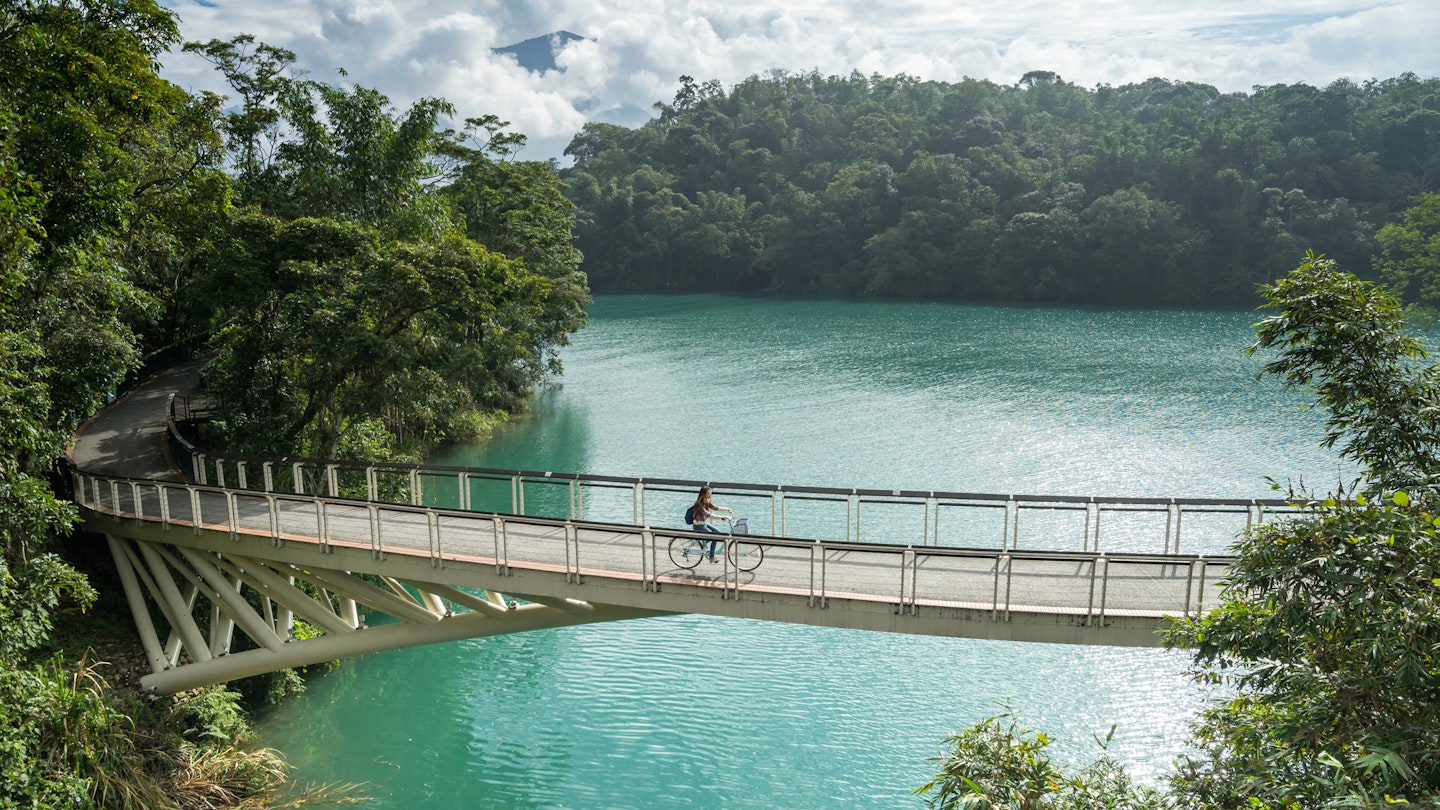
Narrow down your travel plans with this guide to the best places to visit in Taiwan © kitzcorner / Getty Images
With dynamic night markets jam-packed with delectable street food, gorgeous beaches and soaring mountains, Taiwan offers lots in a small package.
Just 395km (245 miles) from top to bottom, travelers will find futuristic cities, historic temples and killer surf breaks – all connected by affordable high-speed rail. As one of the friendliest East Asian countries for LGBTIQ+ travelers, too, it's pretty much got everything. Here are the best places to visit.
1. Sun Moon Lake
Best place to bike
Located in central Taiwan, Sun Moon Lake is renowned for hiking, boating, romantic walks and countryside temples. It’s also famous for its bikeways, frequently found on lists of the world’s most stunning biking paths in the world. There are multiple options, but we recommend the Shuishang Bikeway . This 1300ft-long route wraps so closely around the lake that whizzing around its perimeter feels like floating on water.
2. Beitou, Taipei
Best place for hot springs
Although 130 hot springs spill across this volcanic country island, Taipei locals love Beitou hot springs for their accessibility. Just a 30-minute train ride away from the center of the capital, you can luxuriate in geothermal heat-fueled hot springs. Veiled in the sulfur mist, you'll find hotels outfitted with bathtubs gushing hot water, public baths and a springs-obsessed culture.
Planning tip: Visit Thermal Valley, aka Hell Valley, for one of the world’s only two green sulfur hot springs. It reopened in July 2022 after a renovation featuring improved accessibility, additional facilities and upgraded seating areas.

3. Taroko National Park
Best place to chase waterfalls
Journey to this popular national park for its famed 19km (12 mile) canyon, Taroko Gorge , which features marble cliffs carved through centuries by the Liwu River. Located around 145km (90 miles) southeast of Taipei, the gorge contains hikes of all levels where you can view an abundance of waterfalls towering and small.
Make sure to hit the Yindai, Baiyang and Lushui waterfalls for the most stunning views. Intermediate hikers should trek the 4km round trip (2.6 miles) Baiyang Waterfall Trail, featuring eight tunnels and the Shuiliandong Water Curtain. For photo ops at Taroko National Park , check the waterfall and pavilion at the Eternal Spring Shrine, a picturesque veteran’s memorial.
Best surf spot
Jinzun is located in Taitung County, which is home to the lengthiest coastline in Taiwan, running approximately 175km (109 miles). This little fishing village is a 40-minute drive from Taitung and hosts the Taiwan Open of Surfing . Surfing conditions are decent year-round, but the best time to go is in the autumn and winter, when typhoons create optimal waves. Professional surfers consider the waves here to be world-class, and since surfing is a newer sport in Taiwan, Jinzun is ideal for surfers trying to beat the crowds. If you don’t want to catch waves, go fishing or sunbathe on the sandy beaches. You can also pop 10 minutes south to Dulan to visit the Amis tribal village and Xindong Sugar Factory.
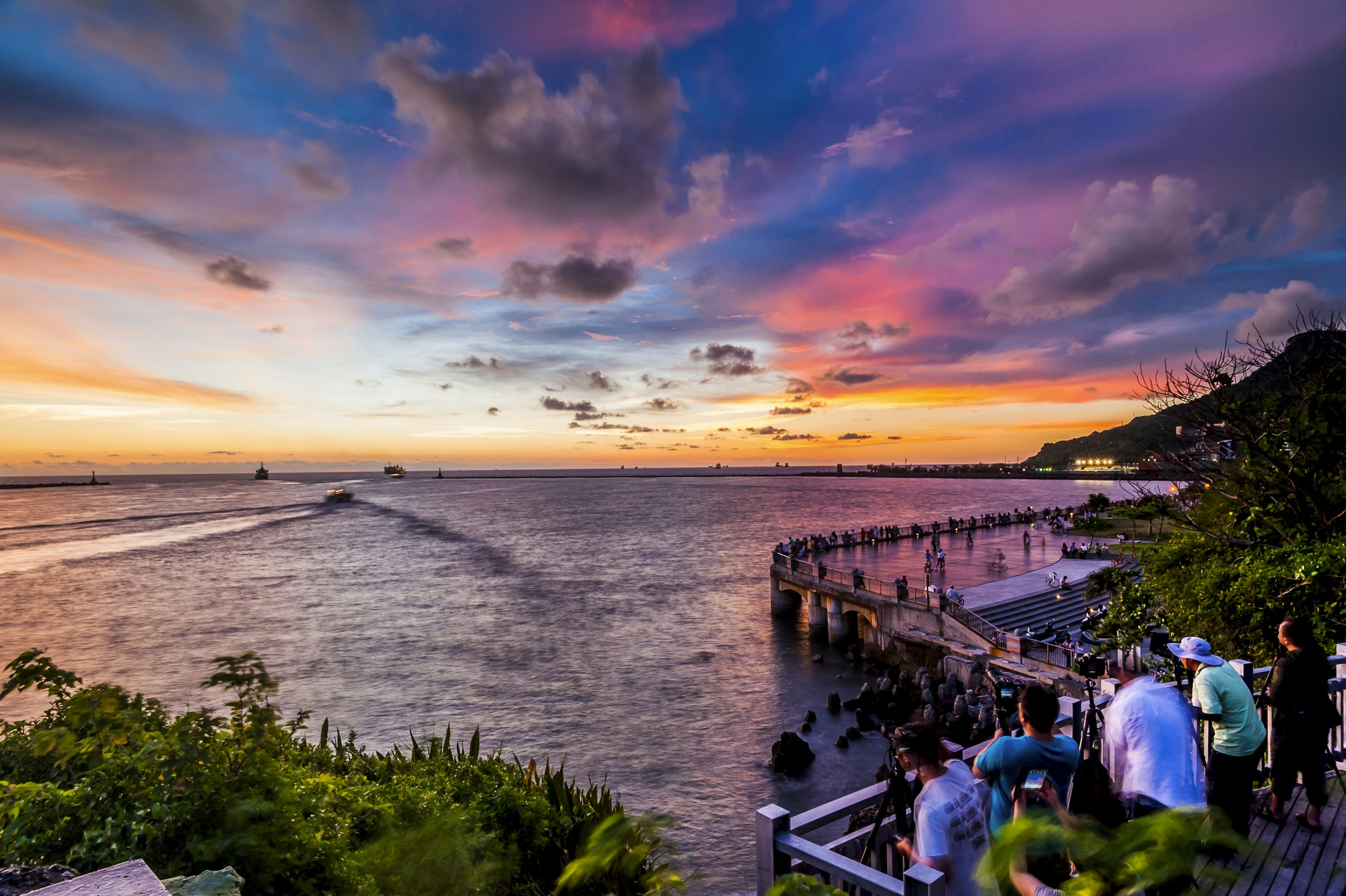
5. Kaohsiung
Best place to temple hop
Taiwan’s second-largest city crackles with energy, and many consider it one of the best places to live on the island for its convenience and safety. Despite Kaohsiung’s zippy streets, you can find pockets of tranquility in its parks, pagodas and temples. Visit Lotus Pond to see more than 20 temples – enter through the Dragon pagoda and exit the Tiger pagoda for good luck.
Located on the north side of the pond is the Kaohsiung Confucius Temple – the largest Confucius temple in Taiwan, designed in the style of a Song Dynasty-era temple. After temple-hopping, visit the romantic Love River and indulge in street eats at the Rueifong Night Market.
Best place for quiet
This beautiful haven for nature fans rests on Taiwan’s northeast coast. Here, mountains meet the sea with cold and hot springs, whale and dolphin-watching, scenic hikes and black sand beaches. Highlights include the Hsuehshan Tunnel – the second-longest highway tunnel in Asia, connecting Taipei to Yilan in just 50 minutes – and the Divine Trees Garden at MaKau Ecological Park. The garden is home to over a hundred indigenous, millennia-old Taiwan red cypress trees, hinoki and benihi trees.
Planning tip: Head to the world’s first quiet trail, Cuifeng Lake Circular Trail – accredited by Quiet Parks International (QPI). It’s a 7.4km round trip (4.6 miles) hiking path, ranging from 1890–1980m (6200–6500ft) above sea level, abutting Sun Moon Lake and winding through floors of dense moss – said to absorb sound.
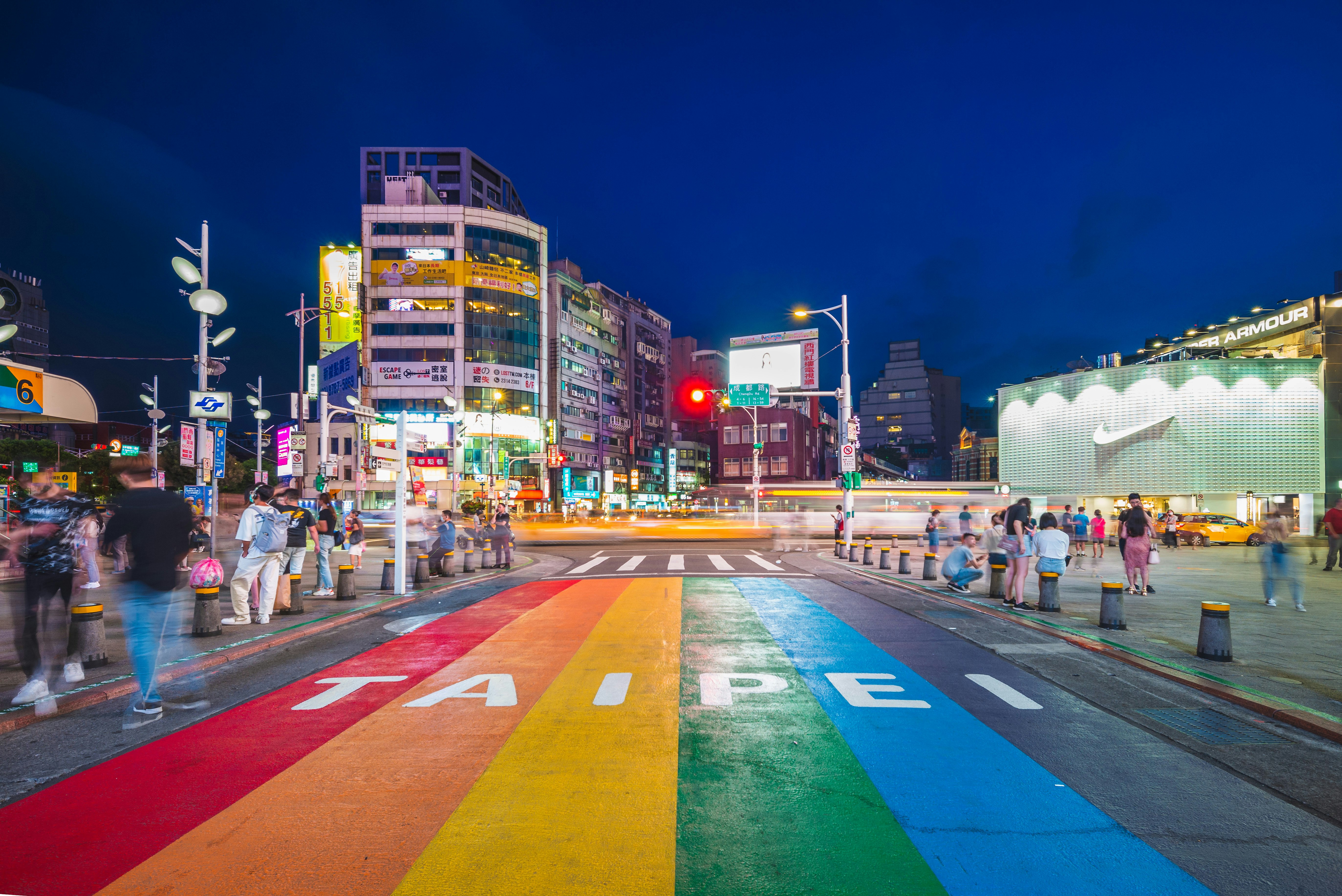
7. Ximen district, Taipei
Best place for LGBTIQ+ travelers
Taiwan has become one of the most progressive Asian countries for LGBTIQ+ rights. As the host of Asia’s biggest Pride parade, it’s also the first country in Asia to legalize same-sex marriage. The Ximen district in Taipei is renowned for its gay scene found behind the historic Red House Theatre , built in 1908. At this first openly gay place in the city, there are countless gay bars, saunas, restaurants and open-air plazas for hanging out.
Planning tip: Ximen district is a well-known shopping area, great for people-watching stylish youth and the high-end fashion of those living in what’s considered the richest city in Taiwan. It’s also likely you'll see cosplayers, impromptu street dances, performances and celebrities and pop stars hosting meet and greets.
Best place for fresh seafood
This port city overlooking the Donghai Sea is about 30km (19 miles) north of Taipei. Known for fresh seafood, Keelung Night Market is the perfect place to sample many dishes at once. Munch on butter crabs, thick crab soup, oyster omelets, tempera fish paste, ding bian cuo – a meat and seafood stew with rice batter noodles, deep-fried crab and braised eel, to name a few.
Continue your eating spree by trying the local street food delicacy, chikuwa , a charcoal-grilled fishcake treat, and leftover remnant of the Japanese occupation at the Zhengbin Fishing Port. Afterward, night owls can hit the Kanziding Fish Market, a large frenetic seafood market open from 10pm to 6am.
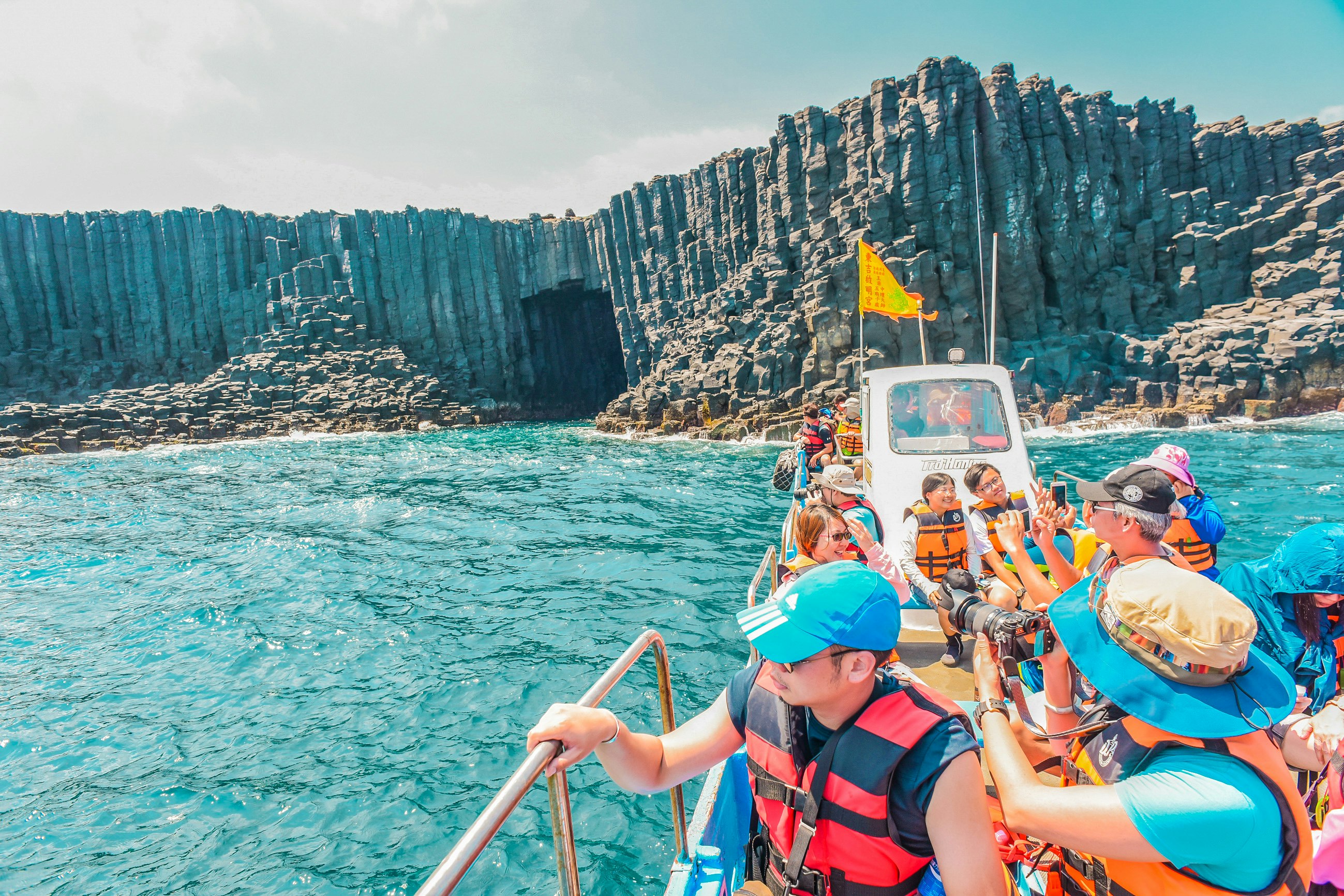
Best place to island hop
Locals love the southwest Penghu archipelago as a holiday destination for its white sand beaches, illustrious basalt columns, and pristine coral reefs. It’s speckled with islands and accessible from Taipei via an hour's flight. You’ll probably land in Magong City, where there’s plenty to explore, like the Penghu Tianhou Temple , Shanshui Beach, and the Du Hang Shih Cun military village. Don’t leave without trying local specialties, such as brown sugar cake, peanut candy, fresh oysters and cactus ice cream.
Planning tip: Sign up for an island-hopping tour with everything from half-day to multi-day itineraries available. History buffs will enjoy Wang-an island for Zhongshe Village, an ancient fishing village. For sunbathers and swimmers, Jibei is a great stop for its stunning beaches . Other famous islands include Wiyu, Baisha and Huxi.
10. Green Island
Best place to be underwater
Snorkelers, freedivers and scuba divers enjoy Green Island’s hundreds of species of brightly colored coral and fish. Located southeast of Taitung , this volcanic island is a diving destination with options for both shore and boat dives. If you prefer being above water, eyeball stunning views from the Lyudao Lighthouse , soak in the Zhaori Hot Spring or relish the island’s natural vistas.
This article was first published January 2023 and updated October 2023
Explore related stories

Tips & Advice
Mar 28, 2024 • 6 min read
From buzzing cities to pristine island getaways, here's our guide to the best places to visit in Japan.

Feb 8, 2024 • 6 min read

Jan 27, 2024 • 15 min read

Oct 29, 2023 • 7 min read

Oct 25, 2023 • 6 min read
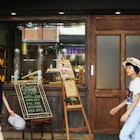
Oct 20, 2023 • 13 min read

Oct 18, 2023 • 7 min read

Oct 14, 2023 • 5 min read

Oct 13, 2023 • 7 min read

Sep 25, 2023 • 7 min read

Tourism in Taiwan
Disclaimer: Some posts on Tourism Teacher may contain affiliate links. If you appreciate this content, you can show your support by making a purchase through these links or by buying me a coffee . Thank you for your support!
Tourism in Taiwan is big business. But why is this industry so important and how should it be best managed? Read on to find out…
Brief Overview of the Geography
Tourism industry in taiwan, statistics about tourism in taiwan, most popular tourist attractions in taiwan, most popular types of tourism in taiwan, impacts of tourism in taiwan, faqs about tourism in taiwan, to conclude: tourism in taiwan.
Taiwan, an island nation rich in culture and history, plays a pivotal role in the Asian tourism landscape. This article delves into Taiwan’s tourism industry, highlighting its economic significance, evolving trends, and inherent challenges. By examining the diverse elements shaping tourism in Taiwan, we aim to shed light on the strategies and dynamics that have fortified its standing in the global tourism arena.

Taiwan, officially known as the Republic of China (ROC), is an island located in East Asia. It is situated in the western Pacific Ocean, around 180 kilometers east of mainland China, across the Taiwan Strait. Here’s a brief overview of the geography of Taiwan:
- Size and Shape: Taiwan has a total land area of approximately 36,193 square kilometers (13,974 square miles). It has a shape that resembles a leaf, with a length of about 394 kilometers (245 miles) from north to south and a width that varies between 144 and 104 kilometers (89 and 64 miles) from east to west.
- Mainland and Islands: The main island of Taiwan constitutes the majority of the country’s territory. It is surrounded by several smaller islands, the largest of which are the Penghu Islands (Pescadores) located in the Taiwan Strait. Taiwan also claims two archipelagos in the South China Sea: the Pratas Islands (Dongsha Islands) and the Spratly Islands (Nansha Islands).
- Topography: Taiwan is characterized by diverse topography. The island is mountainous, with the Central Mountain Range running from north to south. The highest peak is Yu Shan (Jade Mountain) at 3,952 meters (12,966 feet), making it the highest point in Northeast Asia. The eastern coast is rugged and dominated by cliffs, while the western side is flatter and more populated.
- Rivers and Plains: Numerous rivers flow through Taiwan, originating from the central mountains and draining into the surrounding seas. The most significant rivers include the Tamsui, Zhuoshui, and Kaoping. These rivers have formed fertile plains along their basins, such as the Taipei Basin, Taichung Basin, and Kaohsiung Plain, where most of Taiwan’s population resides.
- Climate: Taiwan experiences a subtropical climate, influenced by both the Pacific Ocean and the East Asian monsoon. The northern part of the island has a humid subtropical climate, with distinct seasons and occasional winter frosts. The southern regions have a tropical climate, characterized by high temperatures and abundant rainfall throughout the year.
- Natural Resources: Taiwan possesses various natural resources, including deposits of coal, natural gas, limestone, and marble. The surrounding seas are rich in fish, and the country has a well-developed fishing industry. Additionally, Taiwan has been promoting the use of renewable energy sources such as solar and wind power.
- Environmental Diversity: Taiwan boasts a diverse range of ecosystems due to its varied topography and climate. These include subtropical forests, bamboo groves, alpine meadows, coral reefs, and coastal wetlands. The country has several national parks and protected areas to preserve its natural heritage.
Overall, Taiwan’s geography offers a blend of stunning landscapes, from towering mountains to picturesque coastlines, making it a popular destination for nature lovers and outdoor enthusiasts.

The tourism industry plays a vital role in the economic and social development of nations worldwide. Taiwan, an island nation located in East Asia, has emerged as an intriguing destination for global travelers. With its rich cultural heritage, stunning natural landscapes, and well-developed infrastructure, Taiwan has positioned itself as a prominent player in the international tourism market.
Taiwan boasts a diverse cultural heritage influenced by its history, ethnic groups, and neighboring countries. The island is home to numerous temples, traditional markets, museums, and historic sites that showcase its unique blend of Chinese, Japanese, and indigenous cultures. Key cultural attractions include the National Palace Museum, which houses a vast collection of Chinese artifacts, and the vibrant night markets that offer a sensory feast for visitors. Additionally, Taiwan’s cultural festivals, such as the Lantern Festival and Dragon Boat Festival, provide immersive experiences for tourists seeking a deeper understanding of local traditions.
Taiwan’s natural landscapes are a major draw for tourists, ranging from towering mountains to picturesque coastlines. The island’s mountainous terrain, with peaks reaching over 3,000 meters, offers opportunities for hiking, mountaineering, and breathtaking scenic views. The Taroko Gorge, Sun Moon Lake, and Kenting National Park are among the notable natural attractions that captivate travelers. Furthermore, Taiwan’s hot springs, located in volcanic regions, provide a relaxing escape for visitors seeking therapeutic experiences.
Recognizing the importance of tourism for economic growth, the Taiwanese government has implemented various initiatives and policies to promote the industry’s development. The establishment of the Tourism Bureau under the Ministry of Transportation and Communications highlights the government’s commitment to tourism as a strategic sector. The “Taiwan – The Heart of Asia” marketing campaign and the “New Southbound Policy” aimed at strengthening ties with neighboring countries, have contributed to increased tourist arrivals. Moreover, the government has focused on improving infrastructure, enhancing visitor experiences, and encouraging sustainable tourism practices through collaborations with industry stakeholders.
In recent years, Taiwan’s tourism industry has witnessed several emerging trends that have reshaped the travel landscape. The rise of experiential tourism, characterized by immersive and authentic experiences, has gained popularity among travelers seeking meaningful encounters. Homestays and community-based tourism initiatives have flourished, allowing visitors to engage with local communities and gain insights into their way of life. Additionally, the integration of technology in tourism services, such as mobile apps and virtual reality experiences, has enhanced visitor engagement and convenience.
While Taiwan’s tourism industry has experienced significant growth, it faces various challenges. One such challenge is the need for sustainable tourism development to mitigate the negative impacts of mass tourism on the environment and local communities. The Taiwanese government has embraced this challenge by promoting responsible tourism practices, emphasizing conservation efforts, and supporting community-based initiatives. Sustainable tourism certification programs, such as the Green Hotel Certification and Green Restaurant Certification, encourage industry stakeholders to adopt environmentally friendly practices.
Taiwan’s tourism industry has emerged as a prominent player in the global market, attracting visitors with its rich cultural heritage, stunning natural landscapes, and well-executed government initiatives. This academic introduction has provided an overview of Taiwan’s tourism industry, highlighting its cultural attractions, natural resources, government policies, and emerging trends. Despite challenges, Taiwan’s commitment to sustainable tourism development ensures the industry’s longevity and continued appeal to global travelers. Further research in this area will contribute to a deeper understanding of Taiwan’s unique position in the global tourism landscape.
Now that we know a bit more about tourism in Taiwan, lets take a look at some of the key statistics showing the scale of the industry:
- International Tourist Arrivals: Taiwan welcomed a total of 11.3 million international tourist arrivals in 2020, showing a steady growth trend over the years.
- Tourism Contribution to GDP: The tourism sector contributes significantly to Taiwan’s economy, accounting for approximately 4.4% of the country’s GDP in 2020.
- Main Source Markets: Mainland China is the largest source market for Taiwan’s tourism, followed by Japan, South Korea, Hong Kong, and the United States.
- Domestic Tourism: Domestic tourism plays a vital role in Taiwan’s travel industry. In 2020, domestic tourists accounted for approximately 65% of total tourism consumption.
- Top Tourist Attractions: Some of Taiwan’s popular tourist attractions include Taipei 101, Sun Moon Lake, Taroko Gorge, Alishan National Scenic Area, Kenting National Park, and Jiufen Old Street.
- Night Markets: Taiwan is famous for its vibrant night markets, offering a wide variety of street food, local products, and entertainment. Taipei’s Shilin Night Market and Kaohsiung’s Liuhe Night Market are among the most renowned.
- Medical Tourism: Taiwan has emerged as a popular destination for medical tourism, attracting patients from around the world seeking high-quality healthcare services. The country is known for its advanced medical facilities and skilled healthcare professionals.
- Eco-Tourism: Taiwan’s diverse natural landscapes and preserved ecological areas make it an attractive destination for eco-tourism. Visitors can explore national parks, hot springs, hiking trails, and participate in sustainable activities.
- Business Travel: Taiwan is a hub for international business events and conferences. Taipei, the capital city, is a major destination for business travelers, with modern conference facilities and infrastructure.
- Cruise Tourism: Taiwan has seen growth in cruise tourism in recent years. Ports such as Keelung and Kaohsiung serve as important cruise ship destinations, attracting tourists from various countries.
Now lets take a look at some of the biggest tourist attractions in Taiwan:

- National Palace Museum: The National Palace Museum, located in Taipei, houses an extensive collection of invaluable artifacts that represent over 5,000 years of Chinese history and culture. Showcasing imperial treasures, calligraphy, paintings, and ceramics, the museum provides visitors with a rare opportunity to immerse themselves in the rich cultural heritage of China. The significance of the collection, combined with the splendid architectural design of the museum building, has cemented its reputation as one of the world’s most revered cultural institutions.
- Taroko Gorge: Situated on Taiwan’s east coast, Taroko Gorge is a natural wonder that enthralls tourists with its breathtaking vistas. Carved by the Liwu River, the gorge reveals towering marble cliffs, deep canyons, cascading waterfalls, and lush vegetation. Its geological formations, cultural sites, and hiking trails make it a paradise for nature enthusiasts, geologists, and adventure seekers alike. The harmonious coexistence of natural beauty and cultural significance has made Taroko Gorge an iconic symbol of Taiwan’s diverse landscapes.
- Jiufen: Nestled in the mountains of northeastern Taiwan, Jiufen is a picturesque town renowned for its old-world charm and stunning views of the Pacific Ocean. Once a prosperous mining town, Jiufen now enchants visitors with its narrow alleys, traditional tea houses, and vibrant local markets. The town’s enduring cultural heritage, as depicted in films and literature, adds to its allure. Jiufen’s timeless beauty, preserved architecture, and distinct cultural atmosphere have made it an irresistible destination for those seeking an authentic glimpse into Taiwan’s past.
- Alishan National Scenic Area: The Alishan National Scenic Area, located in the central mountains of Taiwan, is celebrated for its awe-inspiring landscapes, ancient forests, and unique sunrise vistas. Visitors are captivated by the sea of clouds that blankets the mountain peaks, the majestic Alishan train journey, and the towering ancient cypress trees. Beyond its natural splendor, Alishan holds cultural significance as a sacred place for the indigenous Tsou people, highlighting the harmonious relationship between humans and nature. The area’s ecological diversity, coupled with its cultural and spiritual resonance, has established Alishan as a premier ecotourism destination.
- Sun Moon Lake: Nestled in the central mountain range, Sun Moon Lake is the largest freshwater lake in Taiwan, renowned for its serene beauty and tranquil surroundings. The lake’s distinctive shape, resembling the sun and the moon, lends it a poetic allure. Visitors can explore the lake’s surroundings by biking along its picturesque trails, visiting indigenous villages, or taking a boat tour. The integration of natural scenery, cultural heritage, and recreational activities at Sun Moon Lake has solidified its reputation as a must-visit destination for nature lovers and leisure travelers alike.
- Conclusion: This academic exploration has shed light on Taiwan’s most popular tourist attractions, providing a comprehensive understanding of their historical, cultural, and natural significance. From the revered artifacts of the National Palace Museum to the awe-inspiring landscapes of Taroko Gorge and Alishan, and the nostalgic charm of Jiufen and Sun Moon Lake, each destination offers a unique experience that resonates with travelers from around the world. The preservation and promotion of these premier attractions continue to contribute to Taiwan’s vibrant tourism industry, attracting visitors seeking a harmonious blend of cultural immersion and natural beauty.
Now lets take a look at the types of tourism that have contributed to Taiwan’s popularity as a favored travel destination:
- Cultural Tourism: Cultural tourism plays a pivotal role in Taiwan’s tourism industry due to the nation’s profound history and cultural diversity. Visitors are drawn to Taiwan’s temples, historic sites, and traditional festivals, such as the Lunar New Year celebrations and the Ghost Month. Cultural tourism also encompasses visits to museums, indigenous cultural villages, and performances of traditional arts, providing a window into Taiwan’s rich heritage.
- Nature and Ecotourism: Taiwan’s awe-inspiring natural beauty, characterized by majestic mountains, picturesque coastline, and lush forests, has made it an enticing destination for nature enthusiasts. Ecotourism initiatives have flourished, offering visitors the opportunity to explore national parks, engage in sustainable outdoor activities like hiking and bird-watching, and experience the island’s diverse flora and fauna. Popular ecotourism destinations include Taroko Gorge, Alishan National Scenic Area, and Sun Moon Lake.
- Culinary Tourism: Taiwan’s culinary scene has gained international acclaim, propelling culinary tourism to the forefront of the country’s tourism landscape. Taiwanese cuisine showcases a unique blend of influences from mainland China, Japan, and local indigenous cultures. Food enthusiasts flock to Taiwan to savor iconic dishes such as beef noodle soup, stinky tofu, and xiao long bao. Culinary tours, night markets, and cooking classes allow visitors to delve deeper into Taiwan’s gastronomic delights.
- Medical and Wellness Tourism: Taiwan’s well-established healthcare system and renowned wellness facilities have propelled the growth of medical and wellness tourism. The country offers a wide range of medical services, including cosmetic surgery, traditional Chinese medicine, and hot spring resorts that promote relaxation and rejuvenation. International visitors are attracted to Taiwan’s reputation for quality healthcare services, skilled practitioners, and affordable treatment options.
- Adventure and Outdoor Tourism: With its diverse topography, Taiwan provides ample opportunities for adventure and outdoor enthusiasts. Activities such as surfing, paragliding, cycling, and river tracing are gaining popularity among visitors seeking thrilling experiences. The island’s geologically diverse regions, such as Yilan and Hualien, offer thrilling outdoor adventures, while the coastline provides excellent conditions for water sports.

Tourism in Taiwan has experienced remarkable growth in recent years, contributing to the nation’s economic development and cultural exchange. However, this surge in tourism in Taiwan has also raised concerns regarding its impacts on society, environment, and economy.
- Social Impacts of Tourism in Taiwan:
Positive Social Impacts of Tourism in Taiwan:
Cultural Exchange and Understanding: Tourism in Taiwan provides opportunities for cultural exchange, fostering a deeper understanding of the local heritage, customs, and traditions. This interaction enhances mutual respect and appreciation among visitors and local communities, promoting cultural diversity.
Employment and Economic Opportunities: The tourism sector generates employment opportunities, particularly in rural areas, thereby reducing unemployment rates and improving the overall standard of living. Local communities benefit from the creation of direct and indirect jobs, contributing to poverty alleviation and socio-economic development.
Negative Social Impacts of Tourism in Taiwan:
Socio-cultural Disruption: Rapid growth in tourism in Taiwan can lead to changes in the local culture, values, and way of life. Over-commercialization and the introduction of foreign influences may result in the loss of traditional practices and values, negatively impacting the social fabric of the host communities.
Overtourism: Popular tourist destinations in Taiwan, such as Taipei and Jiufen, have experienced overcrowding during peak seasons. Overtourism can strain local infrastructure, increase congestion, and disturb residents’ daily lives, leading to a decline in the quality of life for local communities.
- Environmental Impacts of Tourism in Taiwan:
Positive Environmental Impacts of Tourism in Taiwan:
Conservation and Preservation: Tourism in Taiwan can promote the conservation and preservation of natural and cultural heritage sites. Visitor fees and sustainable tourism initiatives contribute to the maintenance and protection of these sites, ensuring their long-term sustainability.
Environmental Awareness: Tourism in Taiwan can raise environmental awareness among both visitors and locals. Through educational programs and ecotourism initiatives, individuals become more conscious of the importance of environmental conservation and sustainable practices.
Negative Environmental Impacts of Tourism in Taiwan:
Ecological Degradation: Unsustainable tourism practices, such as deforestation, pollution, and habitat destruction, can lead to ecological degradation. Fragile ecosystems, such as national parks and coastal areas, are particularly vulnerable to the negative impacts of tourism-related activities.
Carbon Footprint: Tourism in Taiwan contributes to greenhouse gas emissions through transportation, accommodation, and recreational activities. The increase in visitor arrivals intensifies carbon emissions, exacerbating climate change and its associated environmental challenges.
- Economic Impacts of Tourism in Taiwan:
Positive Economic Impacts of Tourism in Taiwan:
Economic Growth and Development: Tourism in Taiwan contributes to the GDP, foreign exchange earnings, and economic growth. The sector stimulates various industries, including hospitality, transportation, and retail, creating business opportunities and attracting investments.
Job Creation: Tourism generates employment opportunities across various sectors, from hotel staff to tour guides and artisans. The multiplier effect of tourism expenditure further stimulates the local economy, fostering entrepreneurship and improving livelihoods.
Negative Economic Impacts of Tourism in Taiwan:
Seasonal Employment: Tourism employment often exhibits seasonality, leading to irregular work patterns and income fluctuations for workers. This can create economic instability, particularly in communities heavily reliant on tourism as their primary income source.
Leakage of Tourism Revenue: A significant proportion of tourism revenue may leak out of the local economy due to multinational ownership of hotels, importation of goods and services, and repatriation of profits. This can limit the direct economic benefits experienced by local communities.
Tourism in Taiwan has both positive and negative impacts across the social, environmental, and economic dimensions. While it contributes to cultural exchange, employment, and economic growth, tourism can also disrupt local cultures, strain infrastructure, and harm the environment. To maximize the positive impacts and mitigate the negative effects, sustainable tourism practices must be implemented. These practices should prioritize cultural preservation, environmental conservation, and inclusive economic development, ensuring a balance between tourism growth and the well-being of local communities and natural resources.

Now that we know a bit more about tourism in Taiwan, lets answer some of the main questions on this topic:
- Q: What are some popular tourist attractions in Taiwan? A: Taiwan boasts numerous attractions, including Taipei 101, Taroko Gorge, Sun Moon Lake, Alishan National Scenic Area, and Jiufen Old Street.
- Q: What is the best time of year to visit Taiwan? A: The best time to visit Taiwan is generally during the spring (March to May) and fall (September to November) when the weather is pleasant and rainfall is lower.
- Q: Do I need a visa to visit Taiwan? A: It depends on your nationality. Many countries, including the United States, Canada, and most European countries, enjoy visa-exempt entry for tourism purposes, typically for up to 90 days.
- Q: What is the currency used in Taiwan, and can I use credit cards? A: The currency in Taiwan is the New Taiwan Dollar (TWD). Credit cards are widely accepted in most establishments, especially in urban areas, but it’s always good to carry some cash for smaller vendors or markets.
- Q: Is English commonly spoken in Taiwan? A: While English proficiency levels may vary, especially outside major cities, you can generally find English speakers in hotels, tourist attractions, and popular establishments. It’s helpful to carry a phrasebook or translation app for communication.
- Q: How is the transportation system in Taiwan? A: Taiwan has a well-developed transportation system. The MRT (metro) and buses are efficient in cities, while trains connect major cities and towns. High-speed rail (HSR) offers quick travel between Taipei and other religions.
- Q: Is it safe to travel in Taiwan? A: Taiwan is considered a safe destination for travelers. The crime rate is relatively low, and the local people are known for their hospitality and friendliness. Normal precautions, such as staying alert and securing valuables, should still be taken.
- Q: What are some traditional dishes to try in Taiwan? A: Taiwan is famous for its street food culture. Some must-try dishes include beef noodle soup, stinky tofu, bubble tea, oyster omelets, braised pork rice, and pineapple cake.
- Q: Are there any cultural customs or etiquette I should be aware of when visiting Taiwan? A: Taiwanese people appreciate politeness and modesty. It’s customary to greet with a slight bow or handshake. Removing shoes when entering homes or certain establishments, such as temples, is also common practice.
- Q: Can I easily access the internet in Taiwan? A: Taiwan has widespread internet coverage, and many hotels, cafes, and public spaces offer free Wi-Fi. You can also consider purchasing a local SIM card or portable Wi-Fi device for continuous connectivity during your visit.
Taiwan, an island nation, is an intricate blend of traditional Chinese culture and modernity, making its mark in the global tourism industry. With its unique heritage, landscapes, and technological prowess, Taiwan stands as a testament to Asia’s evolving narrative. Dive deeper to uncover more about the world’s intriguing destinations in our subsequent articles.
- 67 Epic Landmarks in China (With Photos)
- 20 fascinating facts about the deserts of China
- 28 Awesome Things To Do In Sanya, The ‘Hawaii Of China’
- Moving to China: 50 CRAZY things you NEED to know
- Becoming an expat in Hangzhou, China: Everything you need to know
Liked this article? Click to share!

A 2024 Taiwan Travel Guide for Planning Your Trip
Last updated on Apr. 10, 2024 by Nick Kembel
Taiwan is a small island nation that packs a serious punch. At only 36,193 km², it is about the size of Vancouver Island in my native Canada, but home to a staggering 23.9 million people.
Do not be fooled by its compact size, however. There are many reasons to visit Taiwan : the tallest mountains in Northeast Asia, rich history & culture, welcoming locals, some of the best night markets and street food in the world – the list goes on. To get a better idea, see my ever-growing list of things to do in Taiwan .
I’ve lived in Taiwan for over 10 years. I’m married to a Taiwanese, and my two kids were born and raised in Taiwan. I’ve written articles about Taiwan for CNN, National Geographic Traveller, Discover Taipei, and Taiwan Travel Magazine, as well as my book, Taiwan in the Eyes of a Foreigner , which has sold more than 7000 copies.
This Taiwan travel guide links out to all of my most useful articles for planning a Taiwan trip. Here on my Taiwan travel blog, Spiritual Travels, you’ll find some of the most comprehensive Taiwan travel information Taiwan tourism details available in English online, all based on years of on-the-ground research.
Let the below be your personal guide to traveling in Taiwan. I’ll be covering a wide variety of topics below, so use the table of contents to jump to the info you need! If you prefer Q&A format, you can find all the same info in these FAQs about Taiwan .
Table of Contents
Travel restrictions and visas.
As of October 13, 2022, Taiwan is totally open for travel. All COVID-related travel restrictions are finished. That brought to an end the 938 days total that Taiwan’s borders were closed to some or all international tourists!
Currently, you just need to find out if your country is eligible for visa-free entry (most are), and for how many days. If you need a visa for Taiwan, or want to stay for longer than the visa-free period, you’ll need to apply at the Taiwan office in your country before coming.
Besides the visa, there are no special forms, tests, vaccines (these were never needed) for entering Taiwan. You just need to fill in the normal arrival card when you arrive, or do it online before you come. Note that some people have reported not receiving an email confirmation after filling in the online form, so you may want to just do it when you arrive in Taiwan. You can stay in any hotel or accommodation you want, including hostels (these weren’t allowed until March 20, 2023).
The outdoor mask mandate ended in late 2022 and the indoor mask mandate ended in early 2023. Now, you only need to wear masks in medical facilities in Taiwan. However, many locals are still wearing them in public.
Following the April 2024 Hualien Earthquake , Taroko Gorge in Hualien is totally closed to visitors for an estimated 6 months to 1 year. Everywhere else in Taiwan is open as normal and fine to visit. Here’s my list of things you can still do in Hualien besides Taroko Gorge .
If you ever have any questions about anything related to traveling in Taiwan, you can call the 24-hour English tourist hotline at 0800-011765 (from outside Taiwan dial 886-800-011765). For COVID-specific questions, dial 1922 (from outside Taiwan dial 886-800-001922).
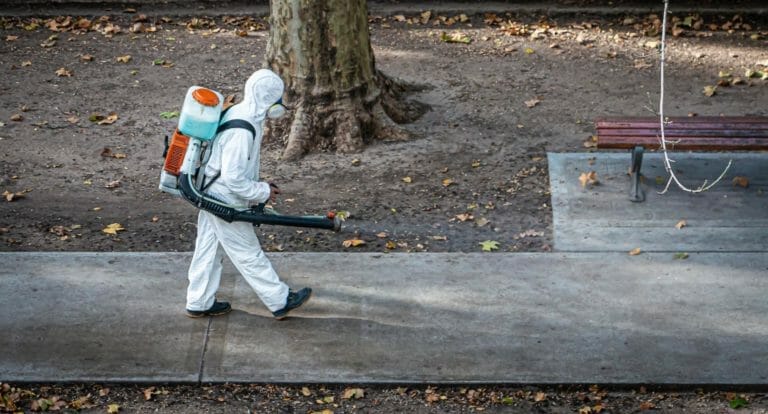
A Guide to Taiwan’s Quarantine Hotels and COVID Travel Restrictions
Taiwan travel planning group.
The absolute best place you can go for any questions about planning your Taiwan trip is my free Facebook group, Taiwan Travel Planning .
Literally any question you have about traveling in Taiwan or planning your Taiwan trip will be answered within 1-2 days by me or other members of the group. I’m also happy to look over your itinerary and give you suggestions. Because I do spend a lot of time every day in the group answering questions, I’ve created this Buy Me a Coffee account for anyone who wants to say thanks (my readers requested this!)
Take a Tour or DIY Travel?
The main purpose of this page, my website, and my Facebook group is to help you plan a DIY trip to Taiwan. Taiwan is an incredibly safe and easy country to travel around. However, this does require some advance planning, especially as trains and hotels in popular destinations in Taiwan often sell out. Generally, Taiwan is not a very suitable country for just showing up and figuring it out once you get there. Even more so since COVID, advance bookings for almost everything are the norm.
If you’re looking for a luxury, fully customized tour of Taiwan, I recommend Life of Taiwan . Their team of experts are some of the most knowledgeable in the industry. They provide personalized tea, food, cultural, or family tours of Taiwan and put you up in some of the country’s most exquisite hotels. If you contact them, please let them know that Nick sent you over!
If you’re in a rush and just want to see the best of Taiwan in a short period, I recommend this Taiwan 5-day tour . It doesn’t include Taipei, which is best visited in a day or two on your own before or after the tour.
What most visitors to Taiwan do, however, is plan their trip on their own. The country’s amazing TRA train (round-island) and High Speed Rail (down the west coast from Taipei to Kaohsiung) systems are actually faster than driving.
Then, when you get to your destination city, you can hire drivers for the day or go on guided day trips only when necessary. This is a very common approach, and there are numerous popular day trips and drivers available on Klook (sign up with this link for a TWD 100 credit in your account). You’ll find that I recommend Klook tours, drivers, car/scooter rentals, discounted attraction tickets, train tickets, and more throughout my Taiwan articles. There are many good deals on there, so you can save a lot of money by using the platform for planning your Taiwan trip.
And for truly DIY or budget travelers, you can certainly do it all on your own, especially with all the articles you’ll find on my website, covering how to visit almost every corner of Taiwan.
Renting a car is also a great option – read my tips for driving in Taiwan here and why I rented my car with Klook .
One good idea is to try one of these free Taipei waking tours on Day 1, then take it on your own from there!
Before Your Trip: Flights, Insurance, Apps, Guidebooks
If you’re coming from a country in Asia, there are numerous budget flights to Taiwan. I’ve prepared this list of the cheapest budget flights to Taiwan .
I’ve tried many different flight websites for finding long haul flights to Taiwan (I live in Canada). My two favorites are Kiwi.com and WayAway . I usually try both these sites when booking my Taiwan flights. They are often (but not alway) cheaper than booking directly with the airlines.
What I like about Kiwi.com is special features like searching not only your departure point but other cities nearby and being able to enter “anywhere” as a destination, and “anytime” as a flying time. For flexible travelers, this allows you to find the cheapest possible flights and dates without searching a million times. Unlike other aggregate flight sites, Kiwi includes budget airlines (many of which fly to Taipei!) and routes combining multiple airlines that are not affiliated.
WayAway is an even newer site and is now my favorite. Like Kiwi, it includes budget airlines, plus it displays awesome calendars showing the price of flights on every day. But the really special feature on WayAway, which will appeal to frequent travelers, is WayAway Plus. Basically, for a small annual fee, you can get cashback (like real cash, deposited to your account) not just for your flights but also any hotels you book through their system. Sign up with this link and you’ll get 10% off WayAway Plus !
Having said that, there are benefits to going with the airline directly, such as being able to easily contact them when needed. rather than going through a third party. China Airlines and Eva Airlines (the one with the Hello Kitty planes!) are two of Taiwan’s largest carriers.
For travel insurance , it’s pretty much a must nowadays. I recommend SafetyWing or Insubuy . Find more details about why in my guide to choosing travel insurance for Taiwan .
Which apps should you download for Taiwan? I’ve got you covered in this guide to the best Taiwan apps for travelers.
Last but not least, I may be old school, but I still love using travel guidebooks for planning my Taiwan trips. My favorite is and always has been the Taiwan Lonely Planet (I have about 5 different issues of it). I also recommend the Bradt Taiwan , written by long-term Taiwan resident Steven Crook. He also co-authored this amazing book covering the history of Taiwanese food, which I highly recommend.
Moving to Taiwan?
If you’re planning on moving to Taiwan for work, family reasons, or simply because Taiwan is an awesome place to live, then you should head over to my novella-sized guide to living in Taiwan .
In that article, I focus more on visa issues, getting a job in Taiwan, finding an apartment, making friends, and all other aspects of daily life in Taiwan, whereas below, I’ll stick mainly to things you need to know for traveling around Taiwan.
Taiwanese History & Culture
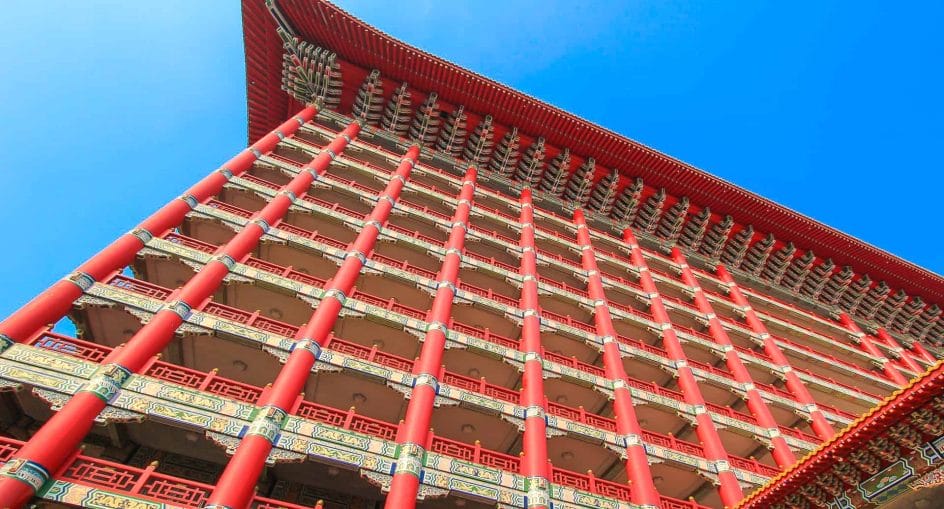
How much do you know about Taiwan? Having lived in Taiwan for many years and married a Taiwanese, I know for a fact that many people around the world know little to nothing about Taiwan. Even some of my friends and family members back home think it is the same as Thailand. For this reasons, I’ve even written this article to explain the differences between Taiwan and Thailand as this one to share some fun and interesting facts about Taiwan .
Taiwan is a small island nation in East Asia. Culturally, it is usually considered part of Northeast Asia, but geographically, some argue that it is closer to Southeast Asia. Taiwan was the original homeland of the Austronesian people, who went on to populate many islands of the Pacific in canoes. Today, their descendants include the 16 recognized aboriginal tribes of Taiwan .
Taiwan was briefly colonized by the Dutch and Spanish, while the Portuguese famously called it “Formosa”, or “beautiful island”, a name which stuck for centuries. Over the last 500 years, millions of people have migrated to Taiwan from China, especially Fujian province in the southeast. That’s why the local language of Taiwan, “Taiwanese” , is also called Minnan; it is the same as the Chinese dialect spoken in the Minnan region of Fujian. Taiwan remained on the fringe of Chinese imperial influence for centuries, then fell to Japanese occupation from 1895 to 1945.
In the Chinese Civil War, the nationalist KMT party of the Republic of China lost to the Communist Party in 1949 and fled to Taiwan, along with millions of Chinese soldiers and refugees from all over China, bringing their language (Mandarin), food, and culture. They thought they’d take back China someday, but they never did. That’s why Taiwan is still officially (and confusingly) called Republic of China, but their passports now finally say “Taiwan” in bigger letters . In 2000, the DPP were the first non-KMT party to win an election in Taiwan. Current President Tsai Ing-wen belongs to the independence-leaning DPP party.
The relationship between Taiwan and China remains complex and is the source of much tension. China claims that Taiwan is a province of China and bullies Taiwan from entering the UN and WHO, and from using the word “Taiwan” in international events like the Olympics (they have to call their team “Chinese Taipei”. But most Taiwanese consider Taiwan independent, and anyone who has been to both countries knows just how different they are. Few countries officially recognize Taiwan, but it acts as an independent country in virtually every way.
Today Taiwan is a modern, vibrant democracy with a free press. It is known for its welcoming people, efficiency, safety, and incredible street food. It has been chosen as the top country in the world for expats . It was also the first country in Asia to legalize equal (gay) marriage rights. Taiwan was one of the success stories in its handling of the COVID pandemic. Also read about some of the most famous people from Taiwan here .
Should you tip in Taiwan? Most often the answer is no. Learn all about Taiwan’s money and currency here .
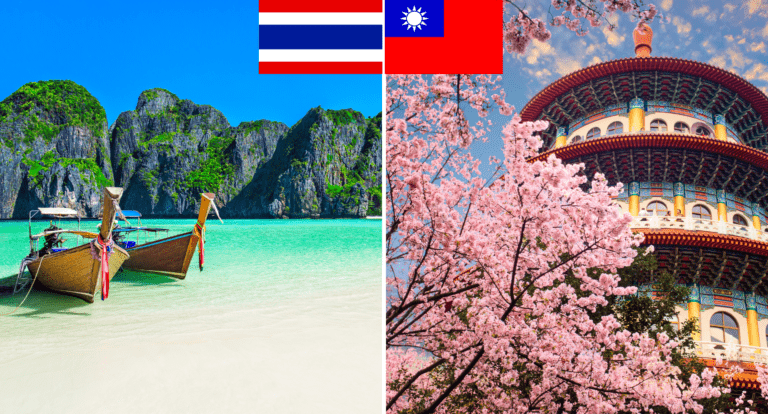
Thailand vs. Taiwan: What’s the Difference?
Taiwanese food.
One of the great pleasures of visiting Taiwan is enjoying the country’s incredible food. Indeed, may travelers from Asian country’s come to Taiwan JUST for the food. Taiwanese is especially known for its incredible variety of cheap and delicious street food .
The best place to try Taiwanese street food is in night markets. Every city in the country has a night market (here are the best night markets across Taiwan ), while Taipei has more than 50. Here I introduce the best night markets in Taipei , night markets in Taichung , night markets in Tainan , and night markets in Kaohsiung . Also don’t miss my favorite night market in the country, Keelung Night Market !
Besides street food, some restaurant experiences you may want to enjoy in Taiwan are DIY barbecue joints, all-you-can-eat hot pot, quick fry (a kind of local eatery suitable for groups, and with lots of cheap dishes meant for sharing, with lots of beer), and Din Tai Fung, the country’s most famous restaurant, which specializes in xiaolongbao (soup dumplings). In this article, I recommend 80+ of my favorite restaurants in Taipei , arranged by style, and the best restaurants open all night in Taipei here !
Seafood lovers should also visit Addiction Aquatic Development , an upscale gourmet seafood market in Taipei, or consider visiting one of the country’s many port markets.
For vegetarians and vegans, you’ll be happy to know you’ll be spoiled for choices in Taiwan. See the vegetarian section of my street foods article, or keep an eye out for the character for vegetarian 素 displayed on Buddhist vegetarian restaurants; many of them are buffet style and you pay by weight. You can also say “I am vegetarian” (wo chi su/我吃素), “Do you have anything vegetarian” (you sude ma?/有素的嗎?) or “Is this vegetarian” (zhe shi sude ma?/這是素的嗎?)
Besides all the articles before, I’ve got several newer food and night markets guides here on my other website, TaiwanObsessed.
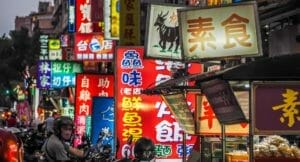
The Top 9 Night Markets in Kaohsiung (& what to eat at each one!)

A Guide to Feasting at Fengchia Night Market in Taichung

Ximending Food Guide: What to Eat & Best Restaurants (2024 updated)
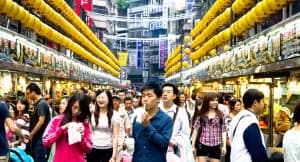
20 Best Night Markets in Taipei (+ What To Eat at Each One!)
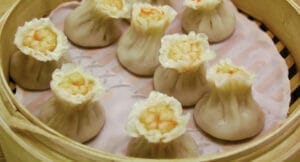
The 80 Best Restaurants in Taipei (by food type!)

The “Big 5” Night Markets in Taichung (+ What to Eat at Each One!)
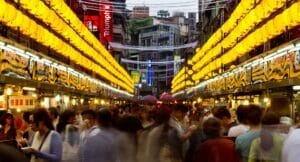
How to Binge Eat Your Way Through Keelung Night Market

What to Eat at Addiction Aquatic Development, Taipei’s Seafood Mecca

Anping Old Street (& other things to do in Anping, Tainan)
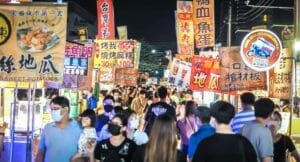
The “Big Five” Night Markets in Tainan & What to Eat at Each One
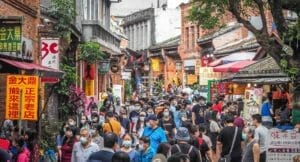
Shenkeng Old Street: A Food Tour of Taipei’s Stinky Tofu Village
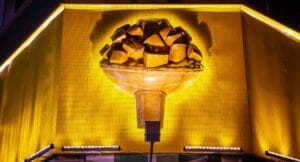
Yongkang Street, Taipei for Foodies: Best Teahouses, Mango Ice, and More
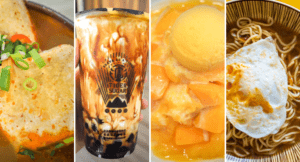
Taiwan Street Food Bucket List: 101 Taiwanese Foods To Try
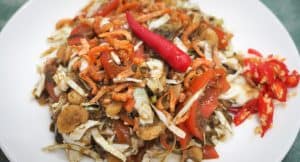
A Food Tour of Burma Street in Zhonghe, New Taipei City
When to visit taiwan.
Deciding on a season or month for your trip to Taiwan is the first step to planning your Taiwan travels, and thus the first topic to cover in this Taiwan traveling guide. To make things easier, I’ve written this dedicated guide to the best time to visit Taiwan . In it, you’ll find a description of every season and month of the year in Taiwan, and links to my 12 individual guides for visiting Taiwan in every month of the year. I update these articles constantly to add upcoming events and Taiwan travel news.
To summarize that article for you here, there’s no real “high” or “low” season for travel to Taiwan; each season of the year comes with some ups and downs. Summer is extremely hot and humid and comes with the chance of typhoons, but it’s also the best time for Taiwan’s beaches , outlying islands , and water-based activities.
Meanwhile, winter can be gray and chilly, but is the best time for hot springs and seeing cherry blossoms. Be careful if planning a trip around Chinese New Year , as many things will close (see my list of attractions and what days they close ), and it can be really difficult to travel around when half the country is on the road. Spring has warm weather but also a mini rain season, while autumn is my personal favorite for these reasons .
Below you’ll also find my individual guides to each season in Taiwan. But don’t fret too much about it; if you can only visit at a certain time of the year, there’s really no bad time to be in Taiwan!

The Best Time to Visit Taiwan: A Month-by-Month Guide
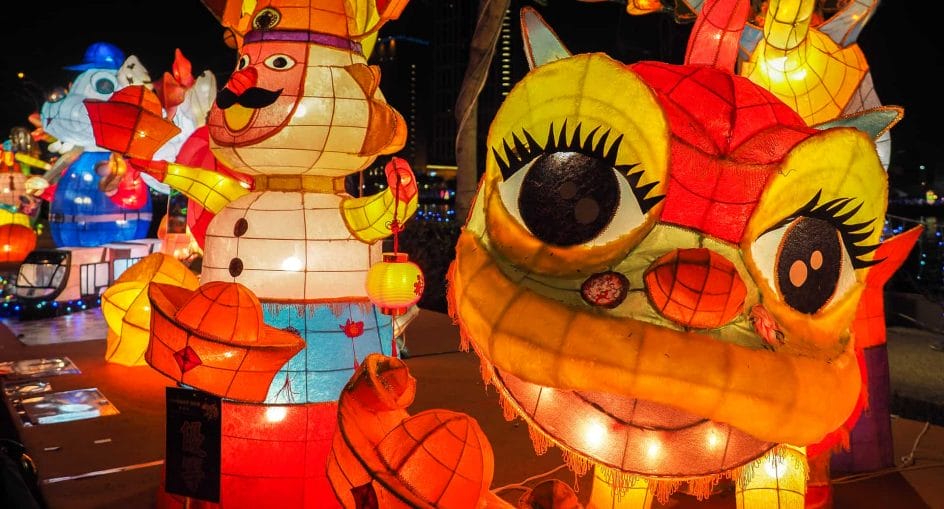
2024 Chinese New Year in Taiwan: Tips for Visiting & Things to Do
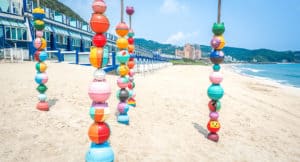
Summer in Taiwan: Everything You Need to Know
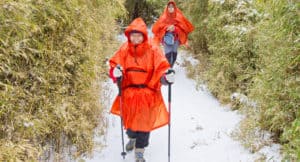
Winter in Taiwan (Xmas, NYE, LNY & Where to See Snow!)

Spring in Taiwan: Everything You Need to Know

Autumn in Taiwan: Everything You Need to Know
Best taiwan travel deal.
Who doesn’t want to find a good deal when traveling to Taiwan? Here are some of the websites and services I regularly use for planning my Taiwan travels:
- Klook : Get big discounts on everything from High Speed Rail & attraction tickets to restaurant vouchers and guided tours. Sign up with this link to get a free TWD100 credit !
- KKday : While Klook is a Hong Kong compared, KKday is the Taiwan version of it. Some activities are the same as Klook, while some are unique. I prefer Klook because KKday sometimes has poor English, but I still sometimes use KKday for things that Klook doesn’t have.
- Booking : My preferred site for finding the best hotel deals in Taiwan.
- Agoda : Some users say they find cheaper prices on Agoda for Asian destinations, including Taiwan.
- Cookly : Find the best cooking courses in Taiwan.
These are some examples of great travel deals you can find on Klook:
Taiwan Travel Passes
One way to save money on travel around the world nowadays is by using city travel passes. Taiwan has a few available, but in order for them to actually save you money, you have to understand how they work, and get the right one for your needs.
Here are some travel passes in Taiwan that you may consider getting:
Taiwan Fun Passes
These 1 to 3-day passes include all transportation in and around Taipei, entrance fees to a long list of attractions, and some tourist shuttle buses for day trips out of Taipei. The most popular one is the Taipei Unlimited Fun Pass , which you can buy here .
Read my detailed review of all the Taipei Fun Passes to see how they work and determine if any of them will be worth it for your Taiwan trip. It only makes sense to get one if you plan to do a lot of sightseeing and MRT riding in Taipei in 1-3 days. Otherwise, I recommend just getting an EasyCard.
You’ll get a TWD 100 credit toward your Fun Pass if you sign up for Klook with this link first before booking!
I haven’t reviewed it yet, but there is a new Klook Taipei Pass . This one is for attractions only, but you have more time to use it, so it’s better for people who will have more time in the city.
Don’t confuse Taipei Fun Passes with the EasyCard , which is what everyone in Taipei uses to swipe onto the MRT and city buses. Read my detailed EasyCard guide for more info than I’ll provide here.
Taipei Fun Passes are designed for tourists, while the EasyCard is a reloadable card used by everyone else, including tourists who don’t get a Taipei Fun Pass. They cost TWD 100 (you can no longer get this deposit back), plus whatever money you load onto them. You can swipe them to ride the MRT in Taipei, Taichung, and Kaohsiung, all city buses in Taiwan, some ferries, and to pay for taxis, items in convenience stores, and more.
You can get an EasyCard from any MRT station, including the Taoyuan Airport MRT station, and load money onto it. You can also order an EasyCard for pickup when you arrive in Taiwan .
Sun Moon Lake Passes
The other place you will find travel passes in Taiwan is at Sun Moon Lake , one of the country’s most popular attractions (we’ll get to those below). There are numerous Sun Moon Lake passes to choose from, and you can buy them from 7-Eleven iBon machines or from train stations in Taichung, the nearest major city.
Like the Taipei Fun Passes, these only save you money if you use them for enough avtivities. Most also include transportation to and from Taichung.
Learn all about the passes and how to use them in my Sun Moon Lake Pass review . Note that these pass prices and what they include are often changing.

Taipei Fun Pass: Is it Worth the Money?

Sun Moon Lake Pass: Is it Worth the Money? (updated 2024)
Best sim card and wifi device.
There’s no doubt that having an Internet connection while traveling in Taiwan is super convenient. You can check GoogleMaps to find the way, communicate with hotels, find bus times, etc. Nowadays, it’s pretty much essential.
A SIM card is the best idea in my opinion, but some people also go for an eSIM like this or pocket Wifi device . I compare all three in my guides to SIMs for Taiwan and eSIMs for Taiwan .
I recommend pre-ordering your SIM card for pickup when you arrive at Taoyuan International Airport. If you go with a WiFi device, then I recommend this one . Note the pick up times – if you arrive in the middle of the night, you may have to pick one up in the city.
You’ll get a TWD 100 credit toward your Taiwan SIM card or WiFi device if you sign up for Klook with this link first before booking it.
Another option that I have yet to fully understand myself is eSIMs for Taiwan – especially considering that the newest iPhones don’t even have SIM card slots anymore. If you are tech-savvy, check them out!
Taipei: The Tantalizing Capital of Taiwan

In some countries, you want to get out of the capital as soon as you arrive. This is not the case with Taipei . For most visitors to Taiwan, I recommend budgeting at least two full days for Taipei City alone, plus add 1-2 more days for day trips from Taipei (even more if you can!)
Taipei is always buzzing with activity; by day, you’ve got atmospheric historical neighborhoods to explore, towering Taipei 101, landmark Chiang Kai-shek Memorial Hall, Beitou Hot Springs, Maokong Gondola, Longshan Temple , and hikes in the hills (and volcanoes!) surrounding the city. After the sun goes down, it’s time to eat ’til you drop in the city’s famed night markets : the most famous ones are Shilin, Raohe, Ningxia, Tonghua, Nanjichang, and Huaxi Night Market .
As if that weren’t enough, Taipei is incredibly safe, and getting around is a breeze on the MRT, one of the best metro systems in the world.
Things to Do & Taipei Itineraries
Here is the most popular article on my website: 50+ awesome things to do in Taipei . For the less famous spots, see my off-the-beaten-track guide to Taipei . Below I’ve also linked to all my Taipei articles.
Besides the below articles, I’ve also got guides to spending one day in Taipei and how to plan a Taipei layover on my other website, TaiwanObsessed.
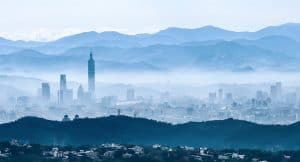
50 Unmissable Things to Do in Taipei in 2024

How to Spend 2 Awesome Days in Taipei

How to Spend 3 Awesome Days in Taipei
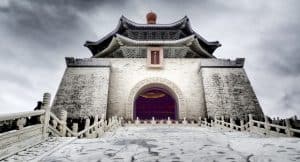
How to Spend 4 Awesome Days in Taipei
The above itineraries will make things easier for those will little time for planning. But my recommendations for Taipei don’t stop there.
For people who want to dig a little deeper and further customize the Taipei portion of their Taiwan trip, here some useful resources that further explore how much Taipei has to offer, including its best temples , night markets , hikes , and beaches .
Also see the my post below for the best times of the year to visit Taipei; the weather of Taipei is quite different to that of other parts of Taiwan, so if your trip to Taiwan is mainly focused on Taipei, you’ll find this article more useful than my “Best time to visit Taiwan” article I linked to above.
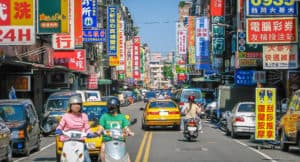
The Best Time to Visit Taipei City: An Insider’s Guide
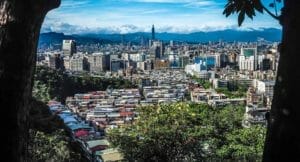
Hiking in Taipei: My 21 Favorite Taipei Hikes

The Best Cat Cafes in Taipei, the Birthplace of Cat Cafe Culture

30 Jaw-Dropping Temples in Taipei and New Taipei City
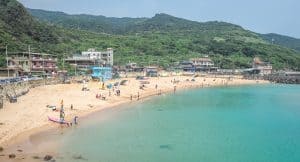
7 Beaches around Taipei You Can’t Miss
Coolest neighborhoods & where to stay.
Deciding where to stay in Taipei can be rather intimidating, as there are so many cool neighborhoods to choose from.
Let me make life easier for you by breaking it down to the best neighborhoods to stay in Taipei , with my hotel recommendations for each one. For each area of Taipei, I’ve included hotel recommendations for budget, mid-range, and luxury travelers, also pointing out which ones are suitable for travelers with kids. I’ve also got specific guides to the best hostels and luxury hotels in Taipei.
Besides my “where to stay in Taipei” article below, I’ve got detailed guides to some of my personal favorite neighborhoods in Taipei: Beitou for hot springs, historic Dadaocheng , and funky, gay-friendly Ximending . Start planning your walking tours with these guides!
If you have a very early or late flight, here are my recommended hotels in and around Taoyuan Airport .
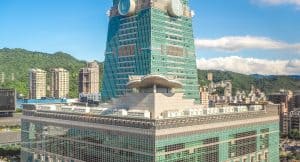
Where to Stay in Taipei in 2024 (by area & budget)
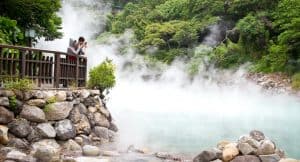
The Ultimate Beitou Hot Spring Guide (2024 info!)
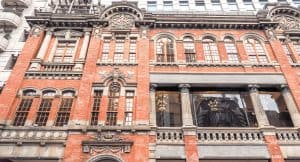
A Guide to Dihua Street in Dadaocheng, Taipei’s Oldest Street

30 Fun (& WEIRD) Things to Do in Ximending, Taipei
Day trips from taipei.
When deciding how long to stay in Taipei, you have to factor in that there some really incredible day trips from the city!
I normally recommend that, if you can, dedicate two full days to exploring Taipei, then another one or two days for day trips. If you only have one day in your Taiwan travel plan to do a day trip from Taipei, I would suggest that you plan it carefully. This way, you’ll be able to squeeze in several of my recommended 40 day trip ideas into one day.
The following five stops are some of the most popular day trips from Taipei, and since they are all fairly close together, you can combine them into one killer day trip from Taipei. There are even some shuttle buses deals like this that can make this even easier to accomplish.
- Jiufen : A former gold mining town on top of a mountain, famous for its atmospheric staircases and teahouses
- Shifen Waterfall : The widest in Taiwan, accessed from a cute train station where people set off sky lanterns
- Houtong : The “Cat Village”, literally a village full of cats
- Keelung : A harbor city with the best night market in Taiwan, forts, beach, and more
- Yehliu Geopark : Odd, wind-blown rock formations on the coast
- Tamsui : A popular riverside promenade with unique foods, beaches, and picturesque colonial forts
If you don’t want to drive or figure out public transportation, there’s an awesome English service called Parkbus Taiwan , which takes guests on day trips from the city for hiking and other activities. Use my discount code “ Spiritual10 ” at checkout to get 10% (may not be available for some events).
There are practically unlimited day trip possibilities from Taipei. This is why myself and so many other expats love living in Taipei; you get the excitement of the city, but you can go somewhere different every weekend. Because Taiwan is so small, and thanks to its amazing transportation system and the High Speed Rail, you can go almost anywhere in Taiwan in a day or weekend trip.

20+ Fun Things to Do in Keelung, Northern Taiwan’s Port City
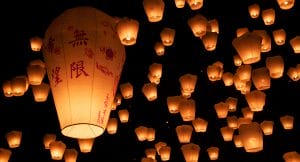
40 Day Trips from Taipei You Can’t Miss
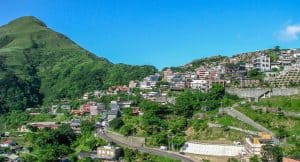

Getting from Taipei to Jiufen and Shifen (with pictures and times)
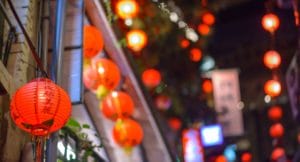
Jiufen Old Street: A 2024 Guide to this Classic Taipei Day Trip
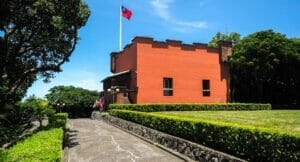
Tamsui, Taiwan: Fishermen’s Wharf, Old Street, & other Things to Do

Wulai Hot Spring & Old Street: A 2024 Guide
Planning your trip around taiwan.
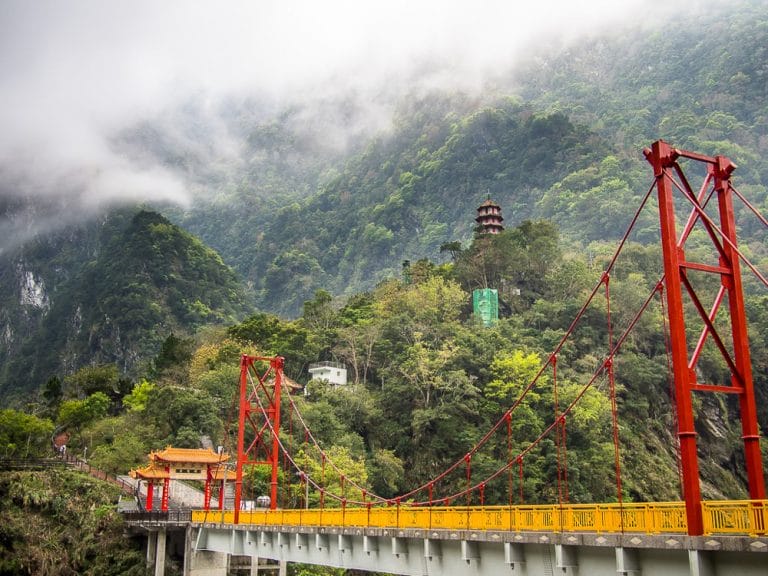
One of the hardest parts of planning a Taiwan trip is mapping out the perfect Taiwan travel itinerary .
What a lot of people do is book their trip first, and then realize they didn’t budget enough time for everything they want to see. Moreover, some of the best things to do in Taiwan are on opposite coasts, with 3000-meter mountains between them!
For example, many people only schedule around one week for their Taiwan trip. Then they decide they want to visit Taipei, Taroko Gorge on the east coast, and Sun Moon Lake and/or Alishan , which are in Central Taiwan but accessed from the west coast. On the map, these three top scenic attractions in Taiwan look fairly close together. But guess what? There are no buses that cross the Central Mountain Range of Taiwan. You can do it in a car, but the road is super winding and takes a long time.
So what I see a lot of visitors doing is going from Taipei to Taroko Gorge first (2.5 to 4 hours on the train, one way). Then they have to return to Taipei, and then travel a similar amount of time down the west coast to reach Sun Moon Lake and/or Alishan. It’s certainly possible, but it means you have to use up an entire day of your trip on the road.
How can you resolve this common Taiwan travel dilemma? I feel the answer is in planning your trip better before you book it, so that you can budget enough days to travel all the way around Taiwan and see everything that you want to without rushing. Which leads to the next important question:
How Long Do I Need to Visit Taiwan?
With a week or less, you will probably only have time to visit Taipei, including some day trips, and perhaps do a 1 or 2-night trip to Taroko Gorge on the East Coast, or Taichung, Sun Moon Lake, and/or Alishan in Central Taiwan (and this would be really rushed).
If you want to do a full circle around Taiwan, these are the most obvious destinations along the way, going in a clockwise direction around Taiwan by riding the train: Taipei, Hualien (Taroko Gorge), Taitung, Kaohsiung, Tainan, Alishan, Sun Moon Lake, Taichung, and back to Taipei.
To do this, you are going to need two weeks or more . With exactly two weeks, you may even have to cut out one or two of the above stops, otherwise you’ll just be checking in and out of hotels every day or two.
With even more time, you can be less rushed, and potentially add more stops, such as the beaches of Kenting on the southern tip of the island (as a side trip from Kaohsiung), Lukang, spend more time in laid-back Taitung, or visit some of the offshore islands, like Green Island, Orchid Island, or Penghu. This is why I think 3 weeks is a great amount of time for visiting Taiwan, and if you can go even longer, all the better!
Taiwan Travel Itineraries
Here are my recommend itineraries for traveling around Taiwan.
The five-day itinerary is for a very short visit, while the second article provides Taiwan itineraries for 1, 2, or 3 weeks. These are tried-and-tested itineraries that I have done in some form or another several times, including with my kids (see more on that below)!
The itineraries for 2 weeks and up involve doing a full circle around Taiwan mostly by train, with a few buses as well. See the end of this article for more information on transportation options for getting around Taiwan.
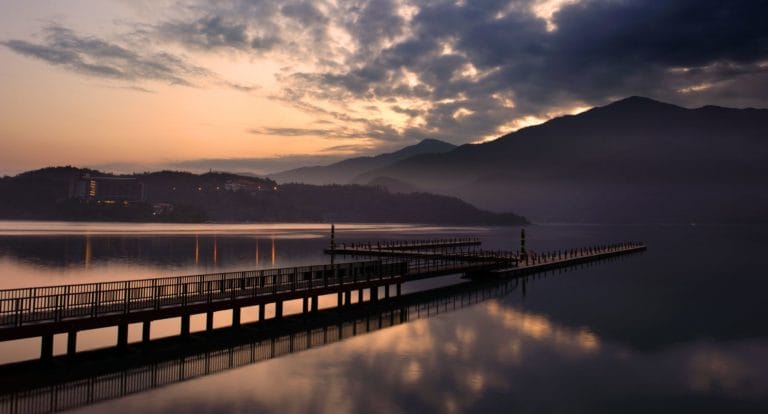
A Taiwan Itinerary for 1, 2, or 3 weeks (Slow & Fast Options!)

A Simple Taipei & Taiwan 5 Day Itinerary
Visiting taiwan with kids.
My kids Sage and Lavender were born and spent the first handful of years of their life in Taiwan. They’ve seen more of the country than most visitors ever will!
Below are my super detailed guides to visiting Taipei with kids and how to plan a complete circle around Taiwan with kids . The latter article is very similar to my above Taiwan itinerary for 1-3 weeks, but with tweaks along the way to focus on sights that my kids loved the most, as well as recommendations for kid-friendly hotels in each stop along the way.
You may also be interested in the best amusement parks in Taiwan , where to see capybaras in Taiwan , and my guide to Yilan, the “kid-friendly county” .

Taiwan with Kids: How to Plan a Round-Island Trip
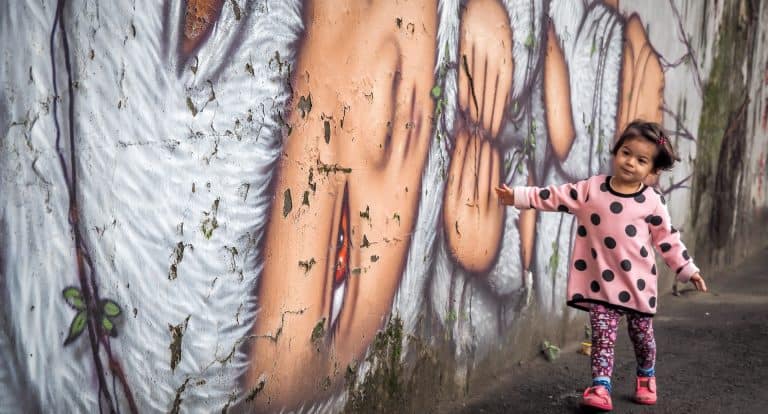
Taipei with Kids in 2024: Ideas from a Local Family
Best attractions around taiwan.
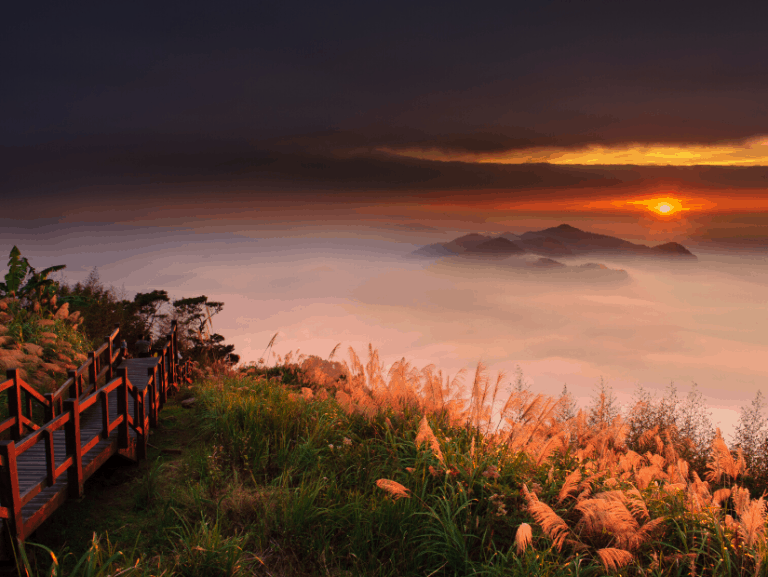
When trying to decide which destinations in Taiwan to include on your itinerary, it will be useful to take a deeper look at each of them to decide which ones are for you.
I’ll start with a list of some of the top scenic attractions. These five are the most common stops that people include on their Taiwan itineraries. I’ll follow that up with the best cities in Taiwan besides Taipei, best hot springs in Taiwan, best off-the-beaten track places to visit, and finally the offshore islands of Taiwan . Again, these are described in clockwise order going around Taiwan.
Top Scenic Attractions in Taiwan
- Taroko Gorge : dramatic canyon in beautiful Hualien County (currently closed indefinitely due to April 2024 earthquake)
- Taitung : Laid-back, rural corner of Taiwan, including the famous Brown Boulevard Cycling Path
- Kenting : Beaches on the southern tip of Taiwan
- Alishan : Mountain resort in Nantou famous for huge trees, high mountain tea, and sunrises above seas of clouds
- Cingjing (Qingjing) Farm : A high mountain farm and resort village that looks like a slice of Europe in Taiwan
- Hehuanshan : The best place to see snow in Taiwan (usually possible in January to March)
- Yushan : Tallest mountain in Taiwan and Northeast Asia, requires permits and planning to climb
- Sun Moon Lake : Beautiful lake surrounded by mountains
Here are my extremely detailed guides to the ones that almost all visitors try to include on their Taiwan travel itinerary:
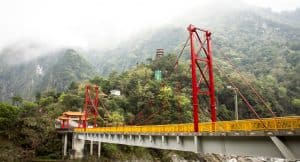
A 2024 Guide to Taroko Gorge and Taroko National Park
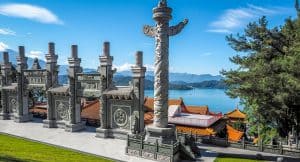
Sun Moon Lake, Taiwan: A 2024 Visitors’ Guide
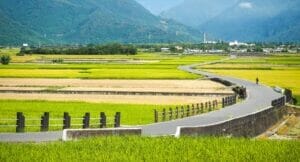
A Guide to Chishang, Taitung and Cycling Brown Boulevard
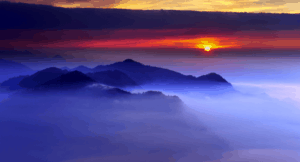
Alishan, Taiwan: A Super Detailed 2024 Guide
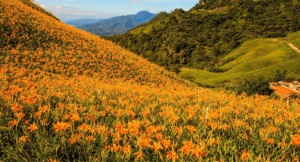
40 Unmissable Things to Do in Hualien, Taiwan
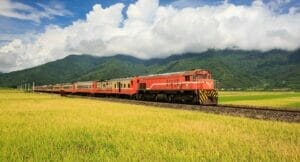
30 Incredible Things to Do in Taitung, Southeastern Taiwan
Best cities in taiwan.
Besides Taipei, which is a given, city lovers are going to find there are a few other cities they may want to include on their Taiwan travel itinerary. You can see my above-linked Taiwan travel itineraries to see how to fit these cities into your schedule.
Since there is one only train line around Taiwan, you’ll have to pass through all of them anyway if doing a full circuit around Taiwan. Since most cities in Taiwan are located on the developed west coast, the below are in counter-clockwise order. The varying time to reach them depends on whether you take the regular train/bus or the much faster High Speed Rail.
- New Taipei City : Taiwan’s largest city literally surrounds Taipei and is home to many of the most popular day trips from Taipei .
- Taoyuan : Best known for the international airport, consider stopping here to visit the impressive Xpark Aquarium on the way to/from the airport.
- Taichung : 1 – 2 hours south of Taipei on the west coast and the largest city in central Taiwan. Known for its artistic attractions like Rainbow Village , Gaomei Wetland , and as the birthplace of pearl milk tea.
- Lukang : 2-3 hours south of Taipei. Historic city famous for its traditional culture, food, and Old Street, and home to one of the most important temples in the country.
- Tainan : 1.75 – 5 hours south of Taipei on the west coast of southern Taiwan. Former capital of Taiwan famous for its temples , night markets , and considered by locals as the food capital of Taiwan.
- Kaohsiung : 2 – 6 hours south of Taipei in the southwest of Taiwan and end of the High Speed Rail line. Port city known for its revitalized harbor front, night markets , street art and Pier 2 Art Center , and the largest Buddhist monastery in Taiwan, Foguangshan . Here are my recommended hotels in Kaohsiung .
- Hualien : 2.5 – 4 hours from Taipei, only major city on the wild, scenic east coast of Taiwan. Mostly people stay in the city to visit nearby Taroko Gorge, but the city has a good night market and opportunities to experience Taiwanese aboriginal culture, such as this aboriginal cooking course .
- Taitung : 3.5 – 6 hours from Taipei, small city known for its aboriginal culture and end-point of most road trips down the east coast of Taiwan

Lukang Old Street (& other Things to Do in Lukang, Taiwan)
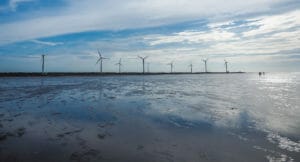
Gaomei Wetlands in Taichung: A Detailed Visitor’s Guide
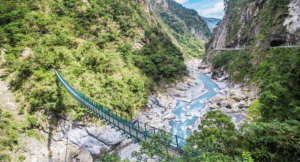
A Detailed Hualien Itinerary for 1-4 Days
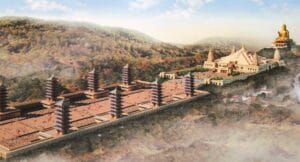
Fo Guang Shan, Kaohsiung: How to Visit and Stay at Taiwan’s Biggest Monastery
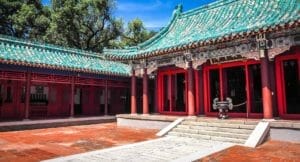
70 Things to Do in Tainan, Taiwan’s Ancient Capital

Our Visit to Rainbow Village Taichung (before it was destroyed)

50+ Things to Do in Kaohsiung, Southern Taiwan
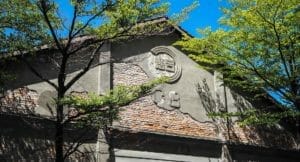
A Guide to Pier 2 Art Center in Kaohsiung City’s Harbor
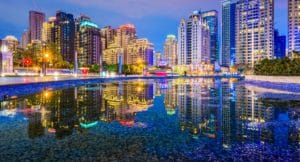
25 Unique Things to Do in Taichung, Taiwan
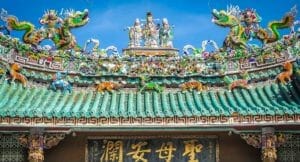
20+ Awe-Inspiring Temples in Tainan, Taiwan
Best hot springs in taiwan.
I happen to be a hot spring lover. Because Taiwan sits on the meeting point of two major tectonic plates, the island is geologically active, with dormant volcanoes and over 100 major hot springs! The most famous is surely Beitou Hot Spring in Taipei , while Wulai , Jiaoxi , and Jinshan can be visited as day trips from Taipei.
Here is my detailed guide to the 20 best hot springs in Taiwan , including information on hot spring etiquette.
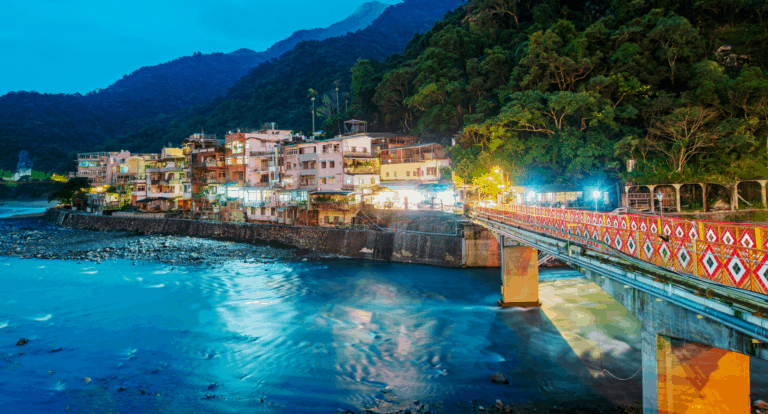
The 20 Best Hot Springs in Taiwan for a Blissful Winter Soak
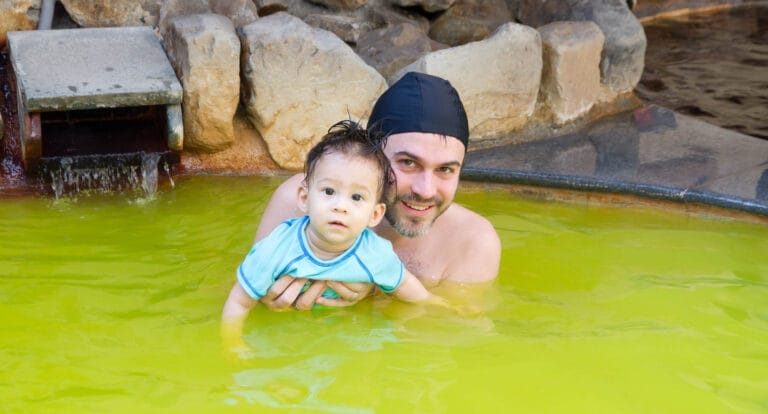
Jiaoxi Hot Spring: A Guide to My Favorite Spa Village in Taiwan
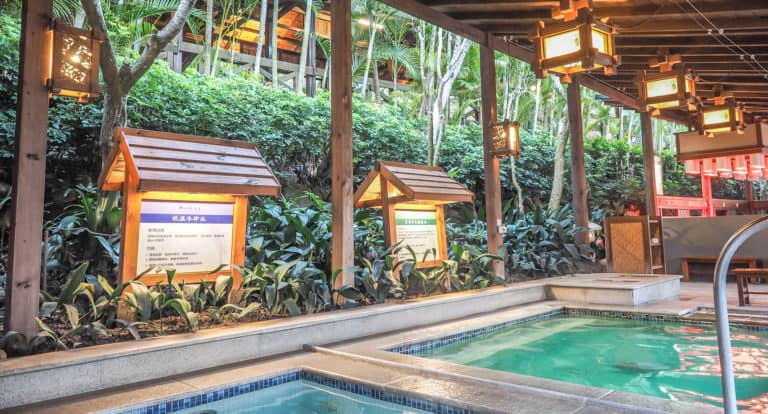
Lovely Tai’an Hot Spring in Miaoli, Taiwan
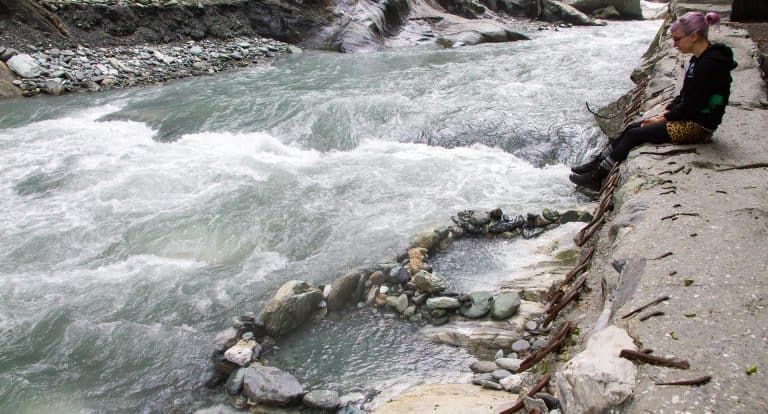
Wenshan Hot Spring: Taroko Gorge’s Spectacular Secret
Off-the-beaten-track places to visit in taiwan.
Just to make things more difficult for you, besides the many must-see places to visit in Taiwan I mentioned above, which already require at least two weeks to visit, there are loads of off-the-beaten-path destinations that are just as worthwhile.
Serious off-the-beaten track travelers should head to my other site, where I’ve got guides to relatively unexplored cities and counties like Taoyuan , Hsinchu , Yilan , Miaoli , Changhua , Yunlin , and Pingtung . I’ve also got this guide to off-the-beaten-track things to do in Taipei .
The below are articles cover some of the more remote or less visited (by foreign tourists) places in Taiwan. These are just the tip of the iceberg, but they are some of my personal favorites.
Depending on what kind of traveler you are, these may appeal to you more than the “must see” attractions I covered above!
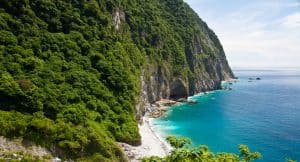
The Stunning East Coast of Taiwan Part 1: Yilan to Hualien and Taroko Gorge

Is Sicao Green Tunnel in Tainan Worth the Trip?

Strawberry Picking at a Strawberry Farm in Dahu, Taiwan
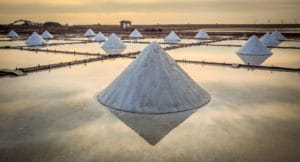
The Stunning Qigu Salt Mountain and Jingzijiao Wapan Salt Fields in Tainan

50+ Fun Things to Do in Yilan, Taiwan (2024 Updated!)
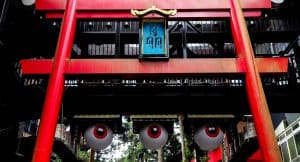
Quirky Xitou Monster Village in Nantou, Taiwan
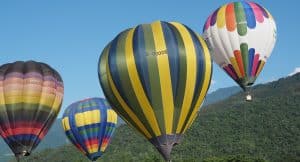
A Guide to Luye & the Taitung Hot Air Balloon Festival 2024
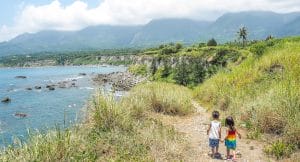
A Guide to Dulan, Taitung: Taiwan’s Coolest Beach Hangout

The Stunning East Coast of Taiwan Part 2: Hualien to Taitung and Kenting

Anping Tree House: How to Visit this Must-See Tainan Attraction
The offshore islands of taiwan.
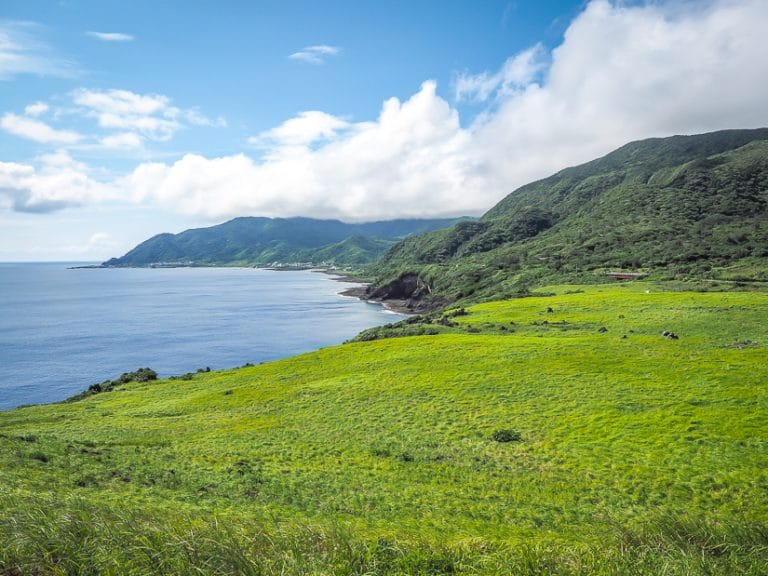
Yet another list of places you’ll want to visit during your Taiwan travels is the offshore islands. However, a visit to any of the offshore islands is like a trip within a Taiwan trip; visiting most of them involves a little more planning and time.
There are about half a dozen main ones to choose from. Also, the offshore islands are best visited in spring, summer (high season due to domestic tourists, but can be very hot), and early fall. In winter, they become very windy (especially Penghu) and/or many traveler’s services totally shut down (especially Orchid Island ).
The first four below are most commonly reached by ferry, with Xiao Liuqiu being the closest to the Taiwan mainland. Orchid Island also has the option of flights in very small airplanes from Taitung, while Penghu has regular flights from Taipei and other cities in Taiwan. Kinmen and Matsu are much closer to China than Taiwan (they are so close to it that you can see China from their shores), so they require flights.
Here are the small islands of Taiwan that you may want to visit someday.
- Green Island : Off Taitung’s coast, best for scenery and snorkeling or scuba diving, and a saltwater hot spring.
- Orchid Island : Harder to reach/plan, and home to Taiwan’s most remote aboriginal tribe.
- Xiao Liuqiu : Snorkeling with sea turtles, and easily done as a day trip from Kaohsiung.
- Cijin : A long, skinny island protecting Kaohsiung’s huge harbor.
- Penghu : Best for beaches, sailing, island hopping and a fireworks festival.
- Kinmen : Much closer to China than Taiwan, known for military history and Kaohliang, a strong liquor.
- Matsu : Also very close to China, known for its tunnels and forts.
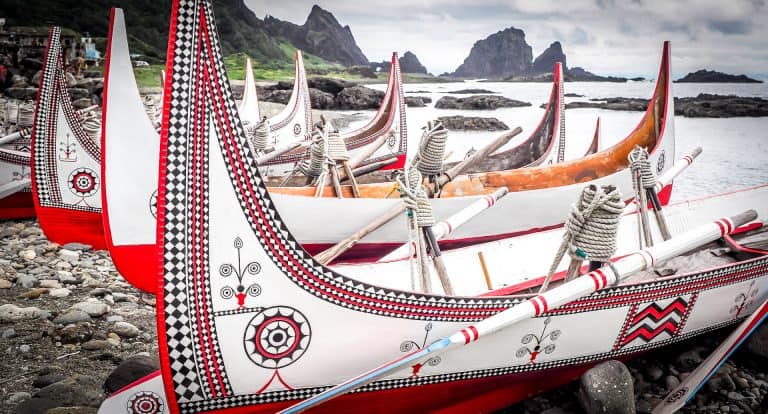
Orchid Island, Taiwan: A Detailed 2024 Guide
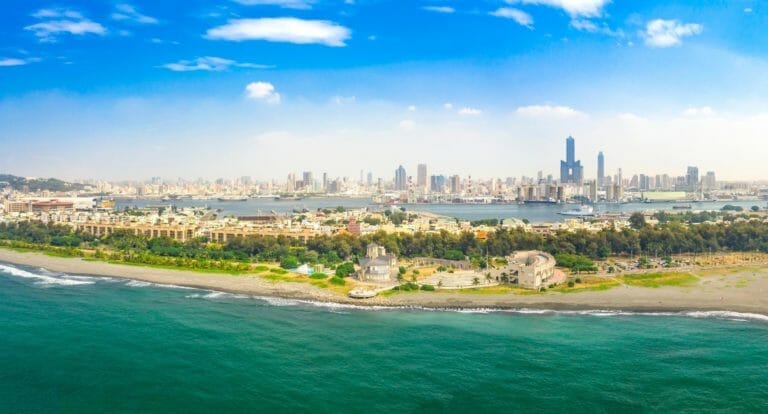
How to Visit Cijin Island in Kaohsiung City’s Port
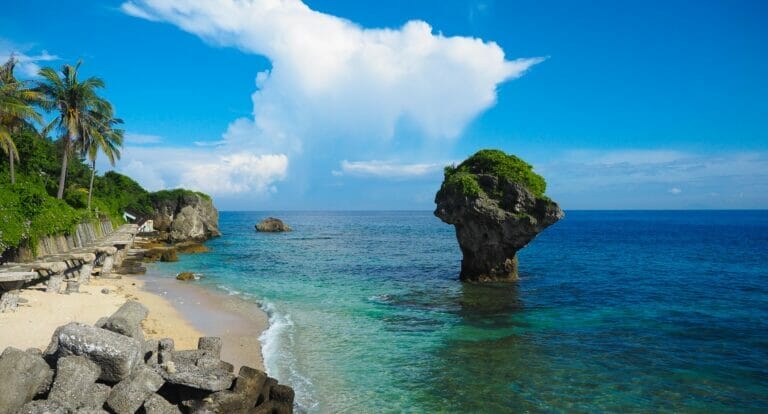
A 2024 Guide to Xiaoliuqiu Island, a Turtle Spotting Hot Spot
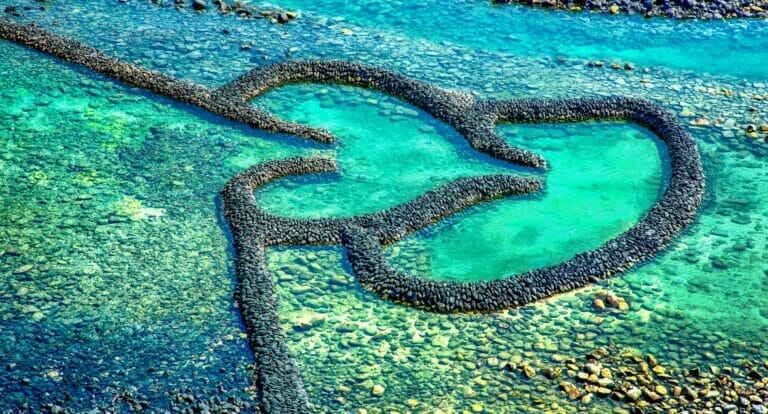
A 2024 Guide to Penghu Islands, Taiwan’s Offshore Paradise
Transportation: how to get around taiwan.
Taiwan has an amazing transportation system, and getting around the country is a breeze thanks to its extremely reliable metros, buses, and railway systems.
It is still important to understand some things about getting around Taiwan, though, in order to avoid disruptions on your trip (like finding out all the trains to your next stop are sold out!)
If you follow my Taiwan itineraries, you’ll mostly be taking trains around Taiwan, with some exceptions. Getting to Alishan is more complicated, as it can involve a train, bus, or combination of the two. Sun Moon Lake and Kenting are also only accessed by bus. Luckily, you don’t need to book any of these bus rides in advance.
See here if you’d like to find a private driver in Taiwan .
Getting Around Taipei
Upon arriving at Taoyuan International Airport, you can takes a bus (TWD135, 1 hour), the new Airport MRT (TWD 165, 35-50 min), or a taxi (TWD1000-1500, 45 min to 1 hr) to Taipei.
I recommended pre-booking a private transfer to your hotel , which is usually a little cheaper than taking a taxi. Also see my more detailed guide to getting from Taoyuan Airport to Taipei . If your flight is very early or late, stay in one of these airport hotels .
The MRT is the lifeline and pride of Taipei. It is considered one of the best metro systems in the world. You’ll love it, and use it to get almost everywhere you go in Taipei.
In order to ride the MRT, it’s best to get an EasyCard from any station (or order it before your trip ) and load some money onto it. This makes it easy to swipe in & out. You have to pay a TWD non-refundable deposit plus however much you want to load onto the card.
The EasyCard also works for buses and taxis in Taipei, ferries in Tamsui, and local buses in cities across the country. It can also be used on the Taichung and Kaohsiung MRT, and regular/local train tickets between cities that don’t require seat reservations. Note that for most long distance buses or trains, you won’t be able to use it.
Taxis are also cheap and plentiful in Taipei. Taipei has Uber, too, but it often isn’t any cheaper than taxis. Taxi drivers speak varying levels of English, and some not at all, so it’s a good idea to have your destination written in Mandarin when taking local taxis. Taxi drivers in Taiwan are honest and won’t try to scam you or rip you off.
Taking the Regular Train (TRA) around Taiwan
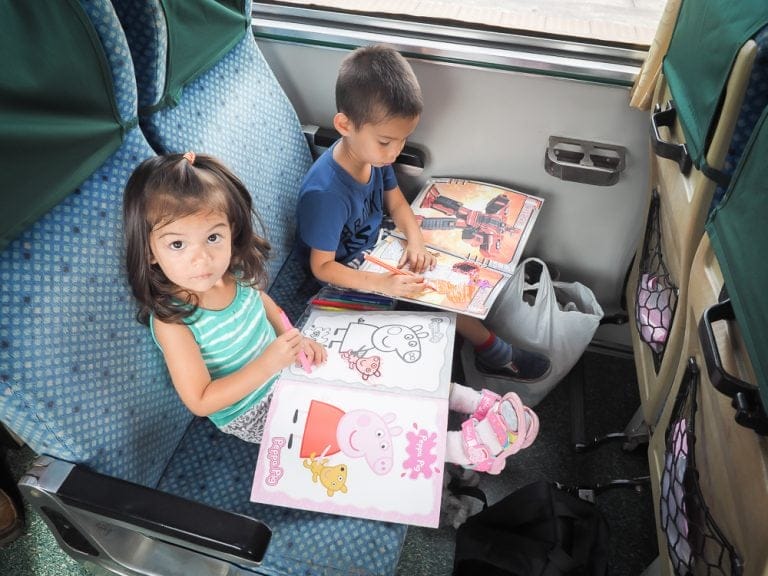
The regular (TRA) train does a full circle around Taiwan. Tickets can be booked online up to exactly 28 days in advance (or 29 days for Saturday trips and 30 days for Sunday trips). See details and screenshots for how to book train tickets online or on the app .
Trains sell out in Taiwan very often, especially on weekends and holidays. Sometimes they even sell out minutes after they go on sale, such as for long weekends, or for very popular rides (like the express train from Taipei to Hualien/Taroko Gorge).
For this reason, it’s very important to book your tickets in advance. Note that 28 days in advance means the tickets go on sale at precisely 12:00 a.m. (midnight). For example, if you want to travel on September 28, you should try to book your ticket at 12:00 a.m. on September 1, which is actually the night of August 31, Taiwan time of course.
If your train sells out, don’t freak out. You can always buy standing tickets on most trains. A lot of people do this, and just stand in the aisle or sit on the floor between train cars (see which ones below). It’s not comfortable for a long ride, but at least you’ll get there. Another option is to try a different time, or take a bus (but beware that there are very few buses running down the east coast).
Note that you are allowed to eat and drink on trains in Taiwan, and they all have toilets on board. You can even discreetly drink a beer on Taiwan trains, although most train station 7-Elevens no longer sell them. But be warned that Taiwanese people tend to be very quiet (and often sleep) on buses and trains, and they don’t appreciate noisy passengers. To be respectful, keep talking to a whisper, or just don’t talk at all. I can’t say how many times we have been “shhed” just for having a conversation at a reasonable volume on buses or trains in Taiwan.
There are different types of TRA trains in Taiwan, and it’s useful to know the names of them when searching for train times. Here they are:
- Local Train (區間車): Slowest, stops at every small stop, cheapest, least comfortable, and you can sit or stand anywhere. Buy ticket at station or swipe with EasyCard.
- Chu Kuang Express (莒光號): Regular trains that circle around Taiwan. Reserved seats, but you can always buy standing tickets from the train station ticket window.
- Tze-Chiang (Express / 自強號 ): Same as the above, but faster and fewer stops. Standing tickets also possible.
- Taroko / Puyuma Express (太魯閣號): Super express train from Taipei to Taroko Gorge/Hualien. Reserved seats only, and always sells out very quickly.
- Tze Chiang Lmt. Express 3000 ( 自強EMU3000 ): A new express train that is also reserved seats only.
The High Speed Rail (HSR)
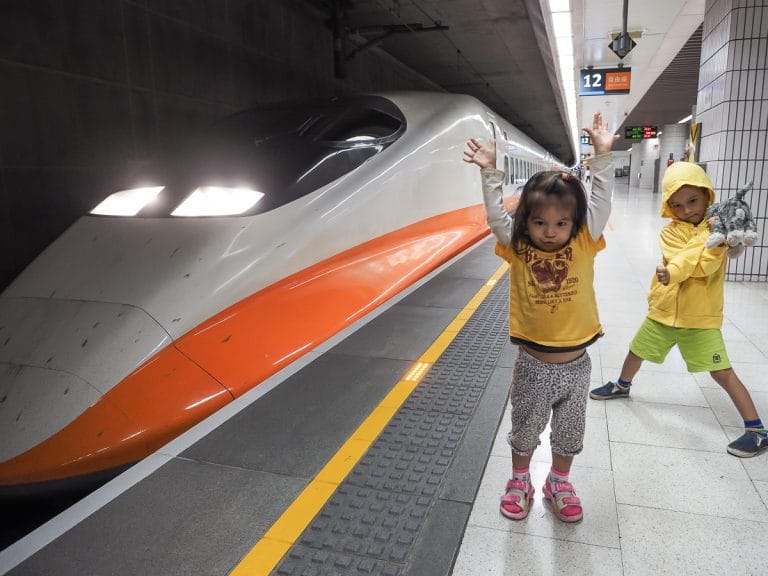
Taiwan has a Japanese-made high speed rail (HSR) sytem. The single line has 12 stops along the highly developed west coast of Taiwan, from Taipei city in the north to Kaohsiung city (called Zuoying Station) in the south.
The first station in Taipei is Nangang, while Taipei Main Station is the most useful, and connects to the Taipei City MRT, regular (TRA) trains, and Airport MRT. Banqiao is located in New Taipei City (the large city that surrounds Taipei City), and Taoyuan is close to the Taoyuan International Airport. To get to Taoyuan HSR station from the airport, you have to ride the Airport MRT a few stops in the opposite direction from Taipei.
Generally speaking, HSR tickets costs about twice as much as the regular train, but get you there twice as fast.
It’s important to note, however, that in most cities, the HSR station is located outside of the city center, just like airports tend to be, so you have to factor in time (and money) to get to the city center once you arrive. This is the case for every stop except for Taipei.
In some cases, though, the location of the HSR station can be more useful. For example, in Taichung, the HSR station is closer to Rainbow Village, and has direct buses to Sun Moon Lake. Similarly, in Chiayi, you can catch a bus directly from the HSR station to Alishan, and thus avoid going into Chiayi City. In Kaohsiung, the HSR station is right beside Lotus Lake, one of the city’s top attractions. To get to the Kaohsiung City center, you just have to hop onto the KMRT.
You can buy HSR tickets online up to 28 days in advance, and buying them early usually gets you an early bird price.
You can also buy discounted HSR tickets on Klook – buying them here allows you to get the early bird discount even when you’ve missed it on the official site. Note that if you buy your tickets on Klook, you have to follow the instructions provided to actually book your seat after you receive the voucher. You can do this online or in person at the station. You’ll need to show your passport. Note that this Klook deal is for short term tourists only; residents/ARC-holders aren’t supposed to buy them.
Unlike TRA trains, the HSR has three cars (#10-12) of unreserved seats. This means you can show up at an HSR station anytime and buy an unreserved ticket at full price from one of the machines. These never sell out.
You aren’t guaranteed a seat, but you can often get one. The only time when demand is crazy high is Lunar New Year and on long weekends, and even then, we’ve always managed to get on without waiting too long.
Special Trains in Taiwan
Besides MRTs (city metros), TRA trains, and the HSR, there are a few special small-gauge train lines in Taiwan. Mostly these are restored old trains that run along former logging lines, built by the Japanese when they were logging during their colonial rule of Taiwan. They tend to be fun and highly scenic rides for tourists.
Here are some of these special small train lines that you may encounter or seek out on your trip:
- Pingxi Line : this small train line provides access to some of the most popular day trips from Taipei, including Houtong, Shifen, and Pingxi. Most people board it at Ruifang, which has direct connections to Taipei by bus or TRA train.
- Alishan Forest Railway : This is the most interesting way to get from the city of Chiayi to the mountain resort of Alishan. However, the final section was destroyed in a typhoon, so you have to take a bus for the final leg. There are also parts of the train line running to scenic spots within Alishan National Scenic Area. You can find all the relevant information in my guide to getting to Alishan .
- Neiwan, Jiji, and Bong Bong Lines : These are three more scenic small train lines that far few foreign tourists ever make it to. They are in Hsinchu, Changhua, and Yilan (on top of Taipingshan Mountain), respectively.
Buses in Taiwan
There are some cases where you will need to take buses in Taiwan. Here are a few common routes that many visitors take:
- In Taipei City, you’ll need to take buses for getting to Yangmingshan National Park or to National Palace Museum
- You’ll also need to ride buses to popular day trip places in New Taipei City, like for getting to Jiufen or Yehliu Geopark. You can swipe EasyCard for all of the above.
- Buses are the only direct way for getting from Taichung to Sun Moon Lake , Sun Moon Lake to Alishan , and Chiayi to Alishan . Click these links to find out how to book them.
- You’ll also need to ride the Kenting Express bus from Kaohsiung to Kenting National Park .
- Buses also run between all major cities on the west coast of Taiwan. They are cheaper but usually a little slower than the train. There are no buses from Taipei to Hualien on the east coast.
Final Thoughts on Planning a Taiwan Trip
Well, I hope you’ve found more than enough information in my Taiwan travel blog for planning your trip. Taiwan remains largely closed to international visitors for the time being, but hopefully big changes are on the horizon.
Please feel free to check back again, as I’m constantly updating my Taiwan travel content to reflect the current situation. And if you’ve got any questions, please join my Taiwan Travel Planning group and I’ll answer them there!
- 1.1 History
- 1.2 Orientation
- 3.1 By plane
- 3.2 By train
- 4 Get around
- 5.1 Historical sites
- 5.2 Temples
- 5.3 Museums
- 5.4 Performing Arts
- 5.5 Landscapes
- 7.1 Traditional streets
- 7.2 Department stores
- 8.1 Night markets
- 8.2 Local specialties
- 8.3 Desserts
- 9.1 Local bars
- 9.2 Western bars
- 10.1 Budget
- 10.2 Mid-range
- 10.3 Splurge
Tainan (臺南; Tâi-lâm in Taiwanese, Táinán in Mandarin), in Southern Taiwan , is the oldest city in Taiwan. Tainan is famous for its temples, historic buildings and snack food. It may be even more under-appreciated compared to the current capital, but is well worth a stop on a round-island trip for a quintessentially Taiwanese experience for both stomach and soul.
Understand [ edit ]
Located on the southwestern coast of the country, it has had a complicated past, first starting as a Dutch colony before passing through Chinese warlords, Japanese occupiers and then into Kuomintang hands. This rich history and heady mix of traditional folk culture gives Tainan far more character than the bigger Taiwanese cities, and is a good contrast to the international Taipei .
History [ edit ]

To truly understand the history of modern Taiwan is to trace its beginnings to Tainan. Tainan (and the start of a non-agrarian Taiwan) began in 1624 when the Dutch East India Company set up a colonial base in the Anping District (安平區 Ānpíng qū). The island of Formosa was strategically placed along major trade routes, and so the Dutch were keen to start building up a trading post and fort known as Fort Zeelandia. They were soon besieged by Ming loyalists led by Koxinga, and their surrender ended 38 years of Dutch colonial rule, bringing Taiwan under Han Chinese influence. However, Koxinga's own rule was similarly short-lived as he died four months after the takeover, yet he lives on as a local folk hero and religious icon of sorts. His grandson gave up control to the Qing dynasty, and Tainan was made the capital of Taiwan County of Fujian Province. However, Tainan, and Taiwan as a whole continued to be a Chinese backwater until the Second Opium War in 1858 forced the reopening of Anping port to foreigners, with British merchants stimulating growth in the city. Tainan lost its status as capital after Taiwan was declared a separate province in 1887, with the Qing government deciding to set up the provincial capital in Taipei instead.

Upon secession of Taiwan to Japan after the Sino-Japanese War in 1895, city leaders tried to declare independence (perhaps the first attempt at formal self-governance) although that failed and anti-Japanese sentiment grew into the Tapani Incident in 1915, when Aboriginal and Han Chinese fighters stormed several police stations in Tainan county. The armed uprising was brutally crushed, marking a turning point in relations between the local population and their occupiers as Japan enacted policies designed to assimilate the Taiwanese into the Japanese Empire , including by encouraging them to adopt Japanese names and Shinto religious practices. Modern infrastructure and urban planning transformed Tainan, befitting the largest Taiwanese settlement at the time. The odd impressive colonial building can still be found around the city, standing out against other less inspiring post-war architecture.
After the island was handed back to the Chinese Nationalists, following their retreat from the mainland after the communist victory, Tainan residents were harshly treated under the slightest suspicion of opposition to the new regime instituted by Chiang Kai-shek. Tainan and the rest of southern Taiwan remain strongly pro-independence to this day, since they have not actively thought of themselves as part of China for the last century or so.
Orientation [ edit ]

The city is the fifth largest city on the island after New Taipei , Kaohsiung , Taichung and Taipei with a population of 1.85 million (2022). For a city of its size by population, Tainan's size by land area is exceptional. Very few buildings are more than 5 to 6 stories in height and most are between two and three stories. Instead, wandering the older winding back alleys holds a lot of charm. Tainan is also extraordinary for its number of temples and shrines, Buddhist and Taoist, large and small, and you'll likely find one hidden around every other corner.
Modern Tainan is centered on the local TRA train station and Zhongshan Road, which runs through West Central District, though Anping District is the historical heart of Tainan. Anping is home to the Anping Old Fort (安平古堡;Ānpíng gu bǎo), the Anping Tree House (安平樹屋 Ānpíng shù wū) (a warehouse with massive banyan trees growing out of it), and numerous restaurants and food stalls. Qigu District in the northeast is noted for its history of salt production and the district's salt fields are also a popular attraction. Yanshui District is infamous for its notoriously fiery fireworks festival. Beyond the city center, the surrounding region is one of the major agricultural centers in Taiwan, and the amount of fresh produce may have inspired much of Tainan's snack food culture.
Talk [ edit ]
Like other Taiwanese cities, most people in Tainan, including taxi drivers, cannot speak English well (except for high school and college students), though some of the older generation can converse in Japanese . However, to help visitors get around, there are free tri-lingual ( Chinese , English and Japanese) map-guides available at the railway station. Taiwanese is spoken by many residents of the city, and the Tainan dialect is considered to be the prestige dialect of Taiwanese.
Get in [ edit ]
By plane [ edit ].
For flight options beyond the Taiwan Strait, the closest international airport is in Kaohsiung . From there you can take a train, bus, taxi, or rental car for a 45-minute to one-hour journey to Tainan. Flying into Taiwan Taoyuan International Airport is also another choice, and you don't have to go into Taipei proper and can just take the HSR train (1½ hours and NT$1350) from Taoyuan .
By train [ edit ]

Tainan is a major stop on the Taipei - Kaohsiung High Speed Rail line (about NT$1500 one way from Taipei). Travel time is 1 hr 45 min from Taipei . The 22.9243 120.2849 2 Tainan HSR station is a bit outside of town (NT$400 by taxi), and you might think it's the wrong stop altogether since the station is surrounded by parking lots and open rice paddies. There are two free shuttle bus routes running from the city to the HSR train terminal: one to the Tainan City Hall , and another to the Chi Mei Medical Center .
You can also take the TRA (slow train) into 22.9972 120.2129 3 Tainan TRA station in the city from Shalun TRA station (linked to the THSR station and NT$25 each way). Besides the THSR, standard TRA rail from Taipei can take 3½-6 hours depending on the type of the train. For example, a class 1 (4 hours) ticket from Taipei will cost NT$758. On the Southern line, trains run very frequently to Kaohsiung (1 hour and NT$70-100), to Taitung (3 hours and about NT$500) and, less frequently, to Hualien .
By bus [ edit ]
Tainan has good inter-city bus connections with other cities in Taiwan. Most of the bus companies have offices on Beimen Rd, north of the train station.
Get around [ edit ]

Tainan is a city which is problematic for pedestrians. Unlike Taipei, most of the sidewalk is essentially privatised, being an extension of the shops and restaurants behind it. The sidewalks are thus frequently blocked by various materials belonging to buildings behind , requiring pedestrians to walk on the roads and take their chances with the cars and motorcycles. Pedestrian crossings are unreliable and often blocked by traffic. If you’re disabled, don’t try and walk.
The best way to travel around the city is by car or motorcycle. Bicycle travel is possible but dangerous for a tourist who has to deal with the various obstacles emerging in the road spaces, which include frequent parked cars blocking the road, aggressive moped users and a general relaxed attitude to traffic rules and regulations amongst all concerned.
You can rent public bikes with an Easycard but you need to link your Easycard online to your credit card since it requires a deposit.
There are taxis and buses (公車 gōngchē), but they are not easy to use for non-Chinese speakers. There is a scooter rental shop next to the Tainan City TRA (slow train) station. Rentals cost around NT$600 per 24 hours. Whether a rental shop will check for a license varies from shop to shop.
All inner city bus routes pass through Tainan Station (train). There is a tourist information booth at the station with friendly staff (English speaking) who can show you how to use the bus system. On Sundays there are two free sightseeing bus routes (88 and 99) which can take you to and back from all the major historical sites. Be careful when getting on buses at the train station, because they stop at two different places depending on which direction they're going. The direction is not obvious unless you read the sign or ask the driver, so make sure not to get on going the wrong way!
The transit cards (Easycard) from Taipei and Kaohsiung can be used on the buses. Many bus stops have electronic displays to tell you when the next bus is coming. Google Maps have (delayed) live update on bus location and are extremely useful. Bus+ is a local app that updates bus location faster.
If you do take a taxi just make sure you have a map you can point at or the business card of your destination. The taxi drivers are very helpful, but sometimes even Chinese speakers take roundabout ways. Uber is widely used by taxi drivers and private cars alike. There are other local apps like Line Taxi and 55688 but they require a local phone number.
There are thousands of scooters and motorbikes packing the streets and if you injure someone while you are driving in Taiwan, the local laws require you to pay for whatever the person you injured cannot. Try getting your insurance company to write a waiver for you to be insured before driving in Taiwan.
See [ edit ]
At first glimpse, Tainan may seem all gray buildings with an alarming number of scooters, but thankfully it doesn't take long to discover its charms. Historical buildings and temples are mostly found in three main clusters: near Chihkan Tower and on Zhongzheng Road, which used to be within old city walls during the Qing Dynasty, and in Anping District.
Historical sites [ edit ]
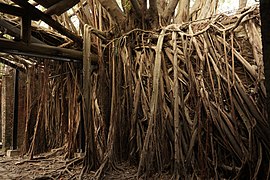
- 22.99676 120.21962 5 National Cheng Kung University ( use rear exit of Tainan Train Station ). Tu-Su 10:00-17:00 . Free .
Temples [ edit ]

Old Taoist religious customs, many of which have been wiped out elsewhere, are cherished and not forgotten here.

Museums [ edit ]

- 23.0582 120.2353 12 National Museum of Taiwan History , 250, Changhe Rd Sec 1, Annan District ( take bus 18 from Tainan Railway Station or bus 20 from Yongkang Railway Station ), ☏ +886 6 3568889 . Tu-Su 09:00-17:00 . The museum covers a broad overview of Taiwan's history from prehistoric beginnings to the present, illustrating various eras with large-scale interactive displays and dioramas. Temporary exhibits focus more of the museum's historical artifacts. Most of the exhibitions have clear English explanations. Besides the museum, the building sits in a large park and is architecturally interesting, focusing on harmonious integration with the environment and housing a huge wall of solar panels that generates enough electricity to power the exhibition hall. NT$80 .
- 22.99179 120.20437 13 National Museum of Taiwanese Literature . Located in a restored colonial-era Japanese building, even with the limited English on display this museum is fascinating. The coffee shop is good too.
- 22.9344 120.2262 14 Chimei Museum ( 奇美博物館 ), 66 Wenhua Rd Sec. 2, Rende District ( Bao'an TRA Station ). Tu-Su 09:30-17:30 . Started by a private collector who has a vast collection of violins, many of them antique in nature and made by masters like Antonio Stradivari and Nicolo Amati. There's also various exhibits about Western art, weaponry and natural history. The building and surrounding park are astonishing in their incongruence and could have been transported entirely from classical Europe. NT$200 . ( updated Jan 2016 )
Performing Arts [ edit ]
- 22.939393 120.230283 26 Ten Drum Culture Village ( 十鼓仁糖文創園區 ), ☏ +886 6 266 2225 , [email protected] . Daily 09:30-17:00; and Sa Su 18:00-20:30, Tu-F 18:00-20:00 . A former sugar factory that has been taken over by a troupe that puts on new age performances using traditional Chinese drums. ( updated Aug 2020 )
Landscapes [ edit ]
- Qigu Salt Mountain
- Jingzaijiao Tile-paved Salt Fields
- Caoshan Moon World (草山月世界), Zuozhen District. An interesting region of mud hills and badlands surrounded by thick bamboo forest and some tropical fruit farms. Take the Green bus from Tainan train station to Xinhua (新化), where it's worth wandering around to grab a bite and see the sights. Then take the Green 13 branch line in the direction of Zuozhen (左鎮) and get out at Ganglin (岡林). Walk past the restaurant and the church then turn right and keep walking. A scooter would make this trip much easier, but keep your eyes open for photo ops along the road. As of June 2017 the published bus schedule is not correct, so make sure to confirm with the staff at Xinhua bus terminal.
Do [ edit ]
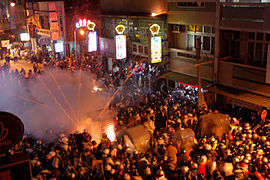
- 23.0024 120.2116 1 Tainan Park ( 台南公園 ), GongYuan North Rd . Beautiful park in a central part of the city. Great for a relaxing walk or a stay of a few hours. It has many beautiful trees, flowers and a pond.
- 22.9804 120.2061 2 Uni-President Lions Baseball , Tainan Municipal Baseball Stadium . Baseball games in Taiwan are lively and light-hearted with a lot of chanting and cheering in unison. Beer and barbecues are even allowed in the bleachers. Stadiums are divided into home and away crowd, infield or outfield. Wear green and orange to blend in with the home crowd. The team does travel between stadiums for games, so check the CPBL schedule . The season runs from March to June and July to September. NT$150-300 . ( updated Jan 2016 )
- 23.0196 120.1353 3 Sicao Lushe Tunnel ( Sicao Green Tunnel; 四草綠色隧道 ), 360 Dazhong Rd, Annan District . Found in Taijiang National Park, there are two boat rides to observe the marine life and migrant birds of a mangrove swamp reserve. The rare black-faced spoonbill can be seen here. The shorter route takes about 30 minutes, while the longer one is about 70 minutes. Queues are roughly the same time as the boat rides, and weekday boat schedules only run a few times per day. NT$150-200 . ( updated Jan 2016 )
- Yanshui Beehive Fireworks Festival . 15th day of the first lunar month . Meant to chase off evil spirits, fireworks are piled into a structure resembling a beehive and set off at street level, which makes it a racuous celebration that requires full-face helmets and fire-retardant jackets for participation.
Buy [ edit ]
The areas around Zhongshan Road, Beimen Road, and the train station make up the downtown of Tainan. South of the main train station is where you can find various boutique stores that mainly focuses on Japanese fashion and sport equipment stores (a popular place to visit for local students).

Traditional streets [ edit ]
- 23.00059 120.16396 1 Anping Old Street . Join the Japanese and Korean tourists on a street lined with stands selling snacks, drinks, souvenirs, and even medicinal herbs. Preserved plums (酸梅 suānméi) are a popular item. Other specialties include shrimp cakes and dried fruit. ( updated Dec 2019 )
- 22.99003 120.20482 2 Fuzhong Street .
- 22.99776 120.19608 3 Shennong Street .
Department stores [ edit ]
- 22.99536 120.20601 4 Far-East Department Store ( 遠東百貨 ), 60 Gongyuan Rd . The department store focuses more on midrange consumers. Downstairs food-court offers good selection of restaurants and Hong Kong-based supermarket Wellcome.
- 22.99171 120.2025 5 Hayashi Department Store ( 林百貨 ), 55 Zhongyi Rd Sec. 2 . Taiwan's oldest department store. On its opening in 1932, the building boasted a then state-of-the-art elevator, which still works. It was bombed during World War II and still has bullet marks to show on the rooftop, next to its Shinto shrine. Located on what was once the richest shopping street in Tainan, the site fell into disuse following the defeat of Japan and the end of World War II until restoration of its elegant interior was completed in 2014. It is now home to another department store selling Japanese and Taiwanese food and handicrafts. Tainan Land Bank diagonally across the road from the store is also a stately Japanese-era building.
- 22.99522 120.20992 6 Shinkong Mitsukoshi ( 新光三越 ), 162 Zhongshan Rd . The department store focuses on both high end products and mainstream fashion. Luxurious brands such as Chanel, Hermes, Ferragamo can be found in the department store. Men's fashion includes Calvin Klein, Hugo Boss, Polo Ralph Lauren, Nautica, Esprit and more. There's also a movie theater inside. Two food courts offer various Asian, western cuisine and fast food chains. There is also a newer, more modern Shinkong Mitsukoshi at 658 Ximen Rd Section 1.
Eat [ edit ]
Tainan is often known as "the City of Snacks" (小吃城). In addition to the wide variety of food available at night markets, the city also has an abundance of street vendors specializing in tasty and cheap dishes. Oysters in particular, are favored in Tainan, from the long association with Anping port. Try the oyster omelette (蚵仔煎 kèzǎijiān / o-a chen ), and oysters and thin noodles (蚵仔麵線 kèzǎi miànxiàn / o-a mi soa~ ) which are cooked differently from those up north. Danzai noodles (擔仔麵 dānzǎi miàn) should not be missed either. Coffin toast (棺材板 guāncaibǎn), fried bread stuffed with various ingredients, such as chicken, beans, seafood, vegetables and milk-based sauces, was also invented here.
The area around Tainan is also known for producing high quality beef, so be sure to try some beef soup while you are here.
Night markets [ edit ]

There are over two dozen night markets of various sizes in and around the city. Regardless of size, night markets all possess an abundance of stalls selling clothing, shoes, jewelry, toys, food and drink. Some even have live entertainment. Most night markets are only held on certain days of the week. Check before going.
- 23.01056 120.1996 1 Garden Night Market ( 花園夜市 huāyuán yèshì ), Haian Road, Sec. 3, between Lixian Rd and Hewei Rd . Open on Th Sa Su . The biggest and most famous open-air night market, there are tons of food stalls and game booths set up in a gigantic parking lot. This market can get very busy (i.e. mosh pit busy) on some days. ( updated Jan 2016 )
- 22.9825 120.21894 2 Da Dong Night Market ( 大東夜市 dà dōng yèshì ), Linsen Rd, Sec. 1 . Open on M Tu F . Very popular among the local university students, especially on Friday nights. ( updated Jan 2016 )
- 23.004317 120.190636 3 Wu Sheng Night Market ( 武聖夜市 wǔ shèng yèshì ), Lane 69, Wusheng Road, West Central District . Open on W Sa . While also popular for its food, this night market stands out for its carnival-style games. ( updated Mar 2020 )
Local specialties [ edit ]
- 22.99226 120.20351 4 Du Hsiao Yueh ( 度小月 ), 16 Zhongzheng Road . A famous purveyor of dan zai mian (擔仔麵), also known as peddlers' noodles because it was made to be sold by fishermen on the roadside. It's a small dish of noodles in pork-shrimp broth, decorated with a single shrimp and delicately balanced with a dash of garlic on top. This is the original branch, and they have opened more stores elsewhere in the country, including one on Yongkang St in Taipei and another in Taoyuan International Airport.
- 22.994089 120.20368 5 A Xia Restaurant ( 阿霞飯店 ), No. 7, Lane 84, Section 2, Zhongyi Road, West Central District . A restaurant famous for its crab sticky rice (紅蟳米糕), often patronized by government officials and foreign dignitaries whenever they visit Tainan.
- 22.996622 120.20281 6 SongChun ( 松村煙燻滷味 ), No. 319, Section 2, Minzu Road, West Central District . Famous purveyor of traditional Taiwanese braised meats. What makes them stand out from other braised meat shops in Taiwan is that they smoke their meats before stewing, giving it a unique smoky flavor. Takeaways only
- Eel noodles
- Rice cake (碗稞 wǎnkē)
- Don't forget to try the shrimp rolls ( zhou-shi ) down along the canal.
- Andi's Party Corner sells traditional Austrian food and beers, an oddity in Tainan.
Desserts [ edit ]
Tainan has a pronounced sweet tooth, and nowhere is this more evident than in their love of sweet treats.
- Elite Cake (狀元糕 zhuàngyuan gāo)
- Imma Bakery , Shulin St. . Coffee house with breads, cakes, cookies, etc. An Israeli chef and Western style.
Drink [ edit ]
There aren't many shiny modern nightspots in Tainan; the city delights in retro bars instead, leveraging on its history and countless number of traditional houses to give a intimate, laidback feel. A smattering of Mandarin or Taiwanese will open more doors in terms of nightlife, otherwise it would be easier to stick to expat hangouts where the owners speak English. Some of the bars provide taxi service if you get too drunk.
Pearl milk tea (珍珠奶茶, zhēnzhū nǎichá), also known as bubble tea, is a must drink in Tainan. Look out for shops where it is made directly to order! The Hanlin Tea House (翰林茶館) is one of two claimants to having invented the drink. Fruit drinks and desserts are always refreshing in the sticky summer heat too.
Local bars [ edit ]
- TCRC Bar , 117 Hsinmei St . A bar hidden in a little side alley, but probably one of the busiest in Tainan. They don't have any menus, with drinks made on request, though the standard cocktails are happily made strong. ( updated Dec 2015 )
- 22.9893 120.19882 1 Seren Cafe Bar , No.26 Lane 371, Fucian Rd. , ☏ +886 6-215-9377 . 14:00-23:00 . An intimate and laid-back cafe bar. Travel and friendship are the themes. ( updated Mar 2016 )
- Drifters Bar .
- Kinks Pub , Lane 232, No. 25 Qingnian Rd .
- Taikoo , 94 Shennong St .
- Speakeasy Bar ( 赤崁中藥行 ), ☏ +886 62219599 . Opens 20:00 . This newest creation of renowned bar entrepreneur Shorty Wu is on the east side alley way of Chikan street lane 45. Reservations are almost mandatory as it is very popular. English-speaking staff. The 'Sampler' is a beautiful array of several of their famous cocktails. Why come here with so many cocktail bars around? The atmosphere is done perfectly. Good food also served. ( updated Mar 2023 )
- The Secret ( 海登CBC酒吧 ), Next door to the Speakeasy Bar 700台南市中西區赤嵌街 45巷6號 , ☏ +886916308806 . What are the chances to have two of the best bars next to each other? This bar starts with a different but equally exceptional atmosphere that combines a lounge feel with a long bar that's great for meeting people, having an upscale London and izakaya Japan feel. Anyone traveling in a group of 3 or fewer that want to meet others would do well to come here, and for larger groups it is a great place to hang out in the cushy lounge area towards the back. The owner Ben is frequently there. Excellent cocktails. ( updated Mar 2023 )
Western bars [ edit ]
- Dirty Roger, Dongmen Rd. ( close to the railway station ).Excellent small bar. Used to be very hip, still very good. Every Music imaginable.
- The Armory, Gongyuan Rd. Good for beers and sport
- Willies Second Base, for beers, sport, food and pool upstairs
- The Hangout Bar , 128-132 Gongyuan Rd ( 公園路 ), ☏ +886 6 226-4861 . 18:00-02:00 . Nice bar to relax, play pool and watch sports. They also have good burgers and steak, free public computer and WiFi. NT$100 .
- Tin Pan Alley , Beimen Road ( Across from Tainan Park ). Great partly outdoor pub and bar near Tainan. Wonderful friendly owners and delicious food ranging from pizza to falafel.
- Yongfu Mansion . It's not Western because it is an almost near-replica on a famous bar in Shanghai, but that original place was in the French Concession and is styled as such. Unique and outstanding atmosphere that takes you back to 1920s expat life in the Pearl of the Orient. The other endeavor of Shorty Wu in Tainan, this bar captures both a cozy darkness and a light energy. Outstanding cocktails and English-speaking staff. ( updated Mar 2023 )
Sleep [ edit ]
The local heritage and religious festivals of Tainan mostly draws only domestic tourists, so weekends, Taiwanese public holidays and school vacations are particularly busy for hotels. There aren't the masses of Chinese tour buses that crowd touristy Jiufen or Sun Moon Lake , so Tainan is a good place to be if you happen to be in Taiwan during the Golden Weeks in January/February or October. Staying near the train station or Chihkan Tower may help simplify public transport as they are easy landmarks and most buses stop at either place.
Budget [ edit ]
- 22.99547 120.20448 1 Guest House Hamuya ( Tainan Guest House ), No. 39, Alley 20, Lane 158, Section 2, Zhongyi Road , ☏ +886 6 2211239 , [email protected] . This is a guest house of a nice and relaxed Taiwanese-Japanese couple. The toilet is a little weird next to the kitchen and only separated by a curtain, if this bothers you. But the rest is authentic and friendly. FB . Dorm NT$500/bed, even during weekends . ( updated Nov 2017 )
- 22.99561 120.21175 2 Guang Hwa Hotel ( 光華商務飯店 ), 155 Beimen Rd Sec 1 ( near the train station ), ☏ +886 6 226-3171 , [email protected] . Check-out: 11:00 . Free internet and breakfast. Double from NT$700 .
- 22.98948 120.19883 3 [dead link] Seren Hostel ( 賽倫青旅 ), No.26 Lane 371, Fucian Rd. , ☏ +886 6-358-0972 . In the city center. Most must-see sites and popular eateries can be reached on foot within 5-15 min. NT$530 .
- 22.99542 120.2045 4 Guest House Hamuya ( Tainan Guest House ), No. 39, Alley 20, Lane 158, Zhongyi Road Section 2 (忠義路二段158巷20弄39號) ( "Alley 20" is vertical to "Lane 158", which is vertical to Zhongyi Road. No. 39 is the vertical alley right before No. 41. ), ☏ +886 62211239 , +886 973713482 , [email protected] . A nice and cosy hostel right in the centre with laid-back staff and nearby café. They maintain their price even during the expensive Saturday/Sunday night. FB . Dorm NT$500 . ( updated Nov 2017 )
- 22.99602 120.21189 5 Cheng Kuang Hotel , 294 Beimen Rd Sec. 1 ( near the train station ), ☏ +886 6 222-1188 . The hotel is a little old, but the rooms are OK for the price.
- [dead link] Tainan City Labour Recreation Centre , 261 Nanmen Rd , ☏ +886 6 215-0174 . Check-out: 11:00 . Large single room including private bathroom NT$550/Double room. Open 06:00-00:00, hot water only from 18:00-00:00. They no longer offer dorm rooms.
- FuQi Hostel , No.76-2, Zhongzheng Rd., West Central Dist., Tainan City 700 ( The hostel is on the 2nd and 3rd floor. The entrance is not very obvious, it's just a metal door with the name of the hostel on it. ), ☏ +886-6-7034543 . WiFi, free internet, kitchen, living room and laundry plus very helpful and friendly staff. Dorm rooms for NT$450 .
- City Hut 1828 ( Dorm1828 ), No.28 Lane 18, Dasyue Road . 15-minute walk from the train station. NT$600 .
Mid-range [ edit ]
- Sendale Yong Fu - Tainan City 新大福軒館 , 115 Yong Fu Rd Section 1 ( behind Landis Hotel, 3 minutes by walking to New Life Square-Mitsukoshi Department Shopping Mall ), ☏ +886 6 214-2988 , fax : +886 6 214-2799 .
- Dynasty Hotel , 46 Chengkung Rd , ☏ +886 6 225-8121 , fax : +886 6 221-6711 .
- Cambridge Hotel , 269 Sec 2 Mintzu Rd .
Splurge [ edit ]
- Shangri-La's Far Eastern Plaza Hotel , 89 Section West, University Rd , ☏ +886 6 702-8888 , fax : +886 6 702-7777 . Five-star property near the train station (regular, not HSR). Free internet (wired and non-wired).
- Tayih Landis Hotel , 660, Shi-Men Rd, Sec.1 , ☏ +886 6 213-5555 , fax : +886 6 213-5555 . 5-star property adjacent to an enormous Shin Kong Mitsukoshi department store. Nearby Confucius temple and the Chihkan towers.
- Evergreen Plaza Hotel , No. 1, Lane 336, Chunghua E. Rd., Sec. 3, Tainan City , ☏ +886 6 289-9988 , fax : +886 6 289-6699 . 4-5 star property about 10 min south of the train station (regular, not HSR). Free internet.
Stay safe [ edit ]
Tainan, like the rest of Taiwan, is very safe for tourists with respect to crime. However, you should keep alert when on the roads - the Bureau of Transportation reports an average of 200 deaths and 20,000 injuries per year from traffic incidents in Tainan alone.
Noise [ edit ]
Adding to the constant flow of traffic in the streets, Tainan also host the greatest number of temple parades in the country which means loud fireworks at potentially any time of day. Moreover, fighter jets performing low passes over the city are a frequent occurrence every day (sometimes up to 30 times a day!), so people who are sensitive to such loud events should be wary.
Go next [ edit ]
- Guanziling – One of Taiwan's best-known hot spring areas.
- Fo Guang Shan – The largest and most impressive Buddhist monastery of Taiwan, just 1 hour southeast of Tainan.
- Kaohsiung – The second largest city of Taiwan, and a port city that took over Tainan's place as the Harbor City, one hour south by TRA train.
- Chiayi – The next northern city and natural jumping off point for the beautiful Alishan , e.g. by the scenic narrow-gauge Alishan Forest Railway.
- Kinmen – If Tainan is the bastion of Taiwanese identity, then Kinmen is an interesting study at the opposite end of the spectrum as a pair of islands inextricably tied to the Chinese mainland.
- Has custom banner
- Has map markers
- Airport listing
- Has mapframe
- Articles with formerly dead external links
- Articles with dead external links
- Do listing with no coordinates
- Eat listing with no coordinates
- Drink listing with no coordinates
- Sleep listing with no coordinates
- Has routebox
- Usable cities
- Usable articles
- City articles
- Southern Taiwan
- All destination articles
- Has Geo parameter
- Pages with maps
Navigation menu

Taiwan (tourism)
- View history
2001–2011 [ ]
The different letters in the logo are all pictograms, mostly representing people. The following is a typical explanation of the logo:
2011–present [ ]

On February 11, 2011, the Taiwan Tourism Bureau launched a new logo and catchphrase to market Taiwan. The new slogan is "Taiwan – The Heart of Asia", replacing the old "Touch Your Heart" slogan.
The new logo consists of the word "Taiwan" and the slogan in a newly created typeface. The logo is supported by heart-shaped collages with images from Taiwanese culture. London-based creative agency Winkreative were involved in creating the new brand.
Taipei Times Taiwan News
- 2 JioCinema
- 3 Nickelodeon/Logo Variations
- International edition
- Australia edition
- Europe edition

House approves $61bn aid for Ukraine – what we know so far, and what happens next
US funding package has cleared its biggest hurdle, the House of Representatives. What comes next in the Senate, and how has the world responded?
The US House of Representatives has approved $95bn in foreign aid for Ukraine, Israel and other US allies in a rare Saturday session as Democrats and Republicans banded together after months of hard-right resistance over renewed American support for repelling Russia’s invasion.
With an overwhelming vote, the $61bn in aid for Ukraine passed in a matter of minutes, a strong showing as American lawmakers race to deliver a fresh round of US support to the war-torn ally. Many Democrats cheered on the House floor and waved Ukraine flags.
The speaker, Mike Johnson, who helped marshall the package to passage, said after the vote: “We did our work here, and I think history will judge it well.”
What does this new aid package include?
The $95bn in total funding includes roughly $61bn for Ukraine with some of the funding going towards replenishing American munitions; $26bn for Israel; $8bn for US allies in the Indo-Pacific region, including Taiwan; and $9bn in humanitarian assistance for civilians in war zones, such as Haiti, Sudan and Gaza , though the package also includes a ban until March 2025 on direct US funding for the UN Relief and Works Agency (Unrwa), an agency providing key assistance to Gaza.
In the Ukraine bill, of the $60.7bn, a total of about $23bn would be used by the US to replenish its military stockpiles, opening the door to future US military transfers to Ukraine. Another $14bn would go to the Ukraine Security Assistance Initiative, in which the Pentagon buys advanced new weapon systems for the Ukrainian military directly from US defence contractors.
There is also more than $11bn to fund current US military operations in the region, enhancing the capabilities of the Ukrainian military and fostering intelligence collaboration between Kyiv and Washington; and about $8bn in non-military assistance, such as helping Ukraine’s government continue basic operations, including the payment of salaries and pensions.
The package includes several Republican priorities that Democrats endorsed, or at least were willing to accept. Those include proposals that allow the US to seize frozen Russian central bank assets to rebuild Ukraine; impose sanctions on Iran, Russia , China and criminal organisations that traffic fentanyl; and legislation to require the China-based owner of the popular video app TikTok to sell its stake within a year or face a ban in the US.
What happens next?
Passage through the House has cleared away the biggest hurdle to Joe Biden’s funding request, first made in October as Ukraine’s military supplies began to run low.
The whole package will now go to the Senate, which could pass it as soon as Tuesday. It is then passed to Biden, the US president, who has promised to sign it immediately.
“I urge the Senate to quickly send this package to my desk so that I can sign it into law and we can quickly send weapons and equipment to Ukraine to meet their urgent battlefield needs,” the president said.
Chuck Schumer, leader of the Democratic majority in the Senate, announced it would begin procedural votes on the package Tuesday, saying: “Our allies across the world have been waiting for this moment.”
The Senate Republican minority leader, Mitch McConnell, as he prepared to overcome objections from his right flank next week, said: “The task before us is urgent. It is once again the Senate’s turn to make history.”
What has been the reaction from Ukraine?
Volodymyr Zelenskiy, the Ukrainian president, said he was “grateful” to both parties in the House and “personally Speaker Mike Johnson for the decision that keeps history on the right track”.
“Democracy and freedom will always have global significance and will never fail as long as America helps to protect it. The vital US aid bill passed today by the House will keep the war from expanding, save thousands and thousands of lives, and help both of our nations to become stronger … Thank you, America!”
Sergii Marchenko, the Ukrainian finance minister, pointed to the legislation’s provision for budget support.
“This is the extraordinary support we need to maintain financial stability and prevail,” he wrote on X.
What has been the reaction from other countries?
Taiwan’s defence ministry said on Sunday it will discuss with the US how to use funding for the island.
The ministry said it “will coordinate the relevant budget uses with the United States through existing exchange mechanisms, and work hard to strengthen combat readiness capabilities to ensure national security and peace and stability in the Taiwan Strait”.
The defence ministry also expressed thanks to the US House for passing the package on Saturday, saying it demonstrated the “rock solid” US support for Taiwan.
Taiwan has since 2022 complained of delays in US weapon deliveries, such as Stinger anti-aircraft missiles, as manufacturers focused on supplying Ukraine.
How has Russia responded?
The Kremlin spokesman, Dmitry Peskov, said the approval of security aid to Ukraine would lead to more damage and deaths in the conflict there.
The decision “will make the United States of America richer, further ruin Ukraine and result in the deaths of even more Ukrainians, the fault of the Kyiv regime”, Peskov said, according to Russian news agencies.
Peskov also said that provisions in the legislation allowing the US to confiscate seized Russian assets and transfer them to Ukraine to fund reconstruction would tarnish the image of the US, and Russia would enact retaliatory measures.
The former Russian president Dmitry Medvedev, writing on the Telegram messaging app, said the approval of US aid for Ukraine was expected and grounded in “Russophobia”.
“We will, of course, be victorious regardless of the blood soaked $61 billion, which will mostly be swallowed up by their insatiable military industrial complex,” wrote Medvedev, who acts as deputy chairman of the security council.
Russian foreign ministry spokesperson, Maria Zakharova, said the approval of aid in the legislation to Ukraine, Israel and Taiwan would “deepen crises throughout the world”.
“Military assistance to the Kyiv regime is direct sponsorship of terrorist activity,” Zakharova wrote on Telegram. “To Taiwan, it is interference in China’s internal affairs. To Israel, it is a road straight to escalation and an unprecedented rise in tension in the region.”
Russia illegally annexed Crimea in 2014, and launched its similarly unprovoked and illegal invasion of Ukraine in February 2022; while Ukraine, an independent and sovereign country, has acted in self-defence.
How will the US get weapons swiftly to Ukraine?
The Pentagon could get weapons moving to Ukraine within days once the military aid package clears the Senate and Biden signs it into law. It has a network of storage sites in the US and Europe that already hold the ammunition and air defence components that Kyiv desperately needs.
According to a US military official, the US would be able to send certain munitions “almost immediately” to Ukraine. Among the weapons that could go very quickly are the 155 mm rounds and other artillery, along with some air defence munitions. “We would like very much to be able to rush the security assistance in the volumes we think they need to be able to be successful,” said Pentagon press secretary Maj Gen Pat Ryder.
“We have a very robust logistics network that enables us to move material very quickly,” Ryder told reporters this past week. “We can move within days.” The Pentagon has had supplies ready to go for months but hasn’t moved them because it is out of money. It has already spent all of the funding Congress had previously provided to support Ukraine, sending more than $44bn worth of weapons, maintenance, training and spare parts since Russia’s February 2022 invasion. Reuters and the Associated Press contributed to this report
- US politics
- House of Representatives
- Biden administration
- US foreign policy
- Israel-Gaza war

Questions in rocket-hit Sderot over whether IDF can ever destroy Hamas

‘Political arrest’ of Palestinian academic in Israel is civil liberties threat, say lawyers

Palestinian baby rescued from dead mother’s womb dies in Gaza hospital

Middle East crisis: it could take 14 years to clear Gaza Strip of rubble and unexploded bombs, says UN official – as it happened

‘We are with them’: support for Hamas grows among Palestinians in Lebanon

USC cancels main commencement ceremony amid Gaza protests

‘Selfless and strong’: memorial honours World Central Kitchen aid workers killed in Gaza

Why we need to stop using ‘pro-Palestine’ and ‘pro-Israel’

Leaders of 18 countries urge Hamas to release hostages held in Gaza
Most viewed.

IMAGES
VIDEO
COMMENTS
National Palace Museum, Taipei. Tourism in Taiwan is one of the major industries and contributor to the economy of Taiwan. In 2022, Taiwan received under 900,000 international visitors, down from 11.8 million in 2019. [1] Tourism affairs are managed by the Tourism Bureau of the Ministry of Transportation and Communications of Taiwan .
Taiwan Tourist Shuttle is a set of distinctly branded bus routes (some intercity, some local) that serve tourist sites, and are generally easier to use than regular routes. The official website offers route maps, timetables and recommended itineraries, but is somewhat confusing to navigate. There is, however, a toll-free number for inquiries.
Meinong East Gate Tower. Moving Castle. Niumatou Site. North Gate of Xiong Town. Presidential Office Building. Qihou Fort. Qing Dynasty Taiwan Provincial Administration Hall. Shihlin Paper Mill. Taipei Guest House.
This Month in Taiwan [formerly dead link] is a free magazine that lists events and has an exhaustive directory of useful numbers in Taiwan. It can be found at tourist offices and major hotels. FTV English Edition [dead link] - This show is an hour of English news shown on Channel 53 (2005) on the local TV station Formosa TV (FTV) at 23:00 ...
Tourism in Taiwan is one of the major industries and contributor to the economy of Taiwan. In 2022, Taiwan received under 900,000 international visitors, down from 11.8 million in 2019. Tourism affairs are managed by the Tourism Bureau of the Ministry of Transportation and Communications of Taiwan.
Welcome to Taiwan. The Tourism Administration has worked hard to highlight Taiwan to the world amid increasing international competition during the current post-pandemic revival in global tourism. In 2023, Taiwan was once again ranked among the world's top-three non-OIC tourist destinations in the Global Muslim Travel Index (GMTI), and was ...
The "Taiwan Tourist Shuttle" has opened 18 new routes and increased service frequency by more than 1,400 service trips every month to improve public transportation services at tourist attractions. Aug 28, 2023. Alabao Bay, one of the world's secret destinations, is now in the international spotlight after winning the PATA Gold Award for its ...
Taiwan, officially the Republic of China (ROC), is a country in East Asia. It is located at the junction of the East and South China Seas in the northwestern Pacific Ocean, with the People's Republic of China (PRC) to the northwest, Japan to the northeast, and the Philippines to the south. The territories controlled by the ROC consist of 168 islands with a combined area of 36,193 square ...
Taiwan's Pride parade, held annually in October, is the largest regular LGBT+ event in Asia, attracting high numbers of participants from the region and internationally. Read more advice for LGBT+ travellers. Transport risks Road travel. If you are planning to drive in Taiwan, see information on driving abroad.
Located on the north side of the pond is the Kaohsiung Confucius Temple - the largest Confucius temple in Taiwan, designed in the style of a Song Dynasty-era temple. After temple-hopping, visit the romantic Love River and indulge in street eats at the Rueifong Night Market. 6. Yilan. Best place for quiet.
Weather conditions fluctuate during spring and winter, while in summer and autumn the weather is relatively stable. Taiwan is extremely suitable for traveling, as the annual average temperature is a comfortable 22 degrees Celsius with the lowest temperatures on the lowlands generally ranging from 12 to 17 degrees Celsius (54-63 Fahrenheit ...
Town Culture, Nature, Food and Hospitable People: Feel the Charm of Taiwan! Taiwan is a long island covering 36,000 square kilometres of land. Situated between the southeast of the Asian Continent and the East and Southeast Asia Island Arcs of the West Pacific Ocean, it faces Japan and Ryukyu Islands in the North and the Philippines in the South, connecting all parts of Asia.
International Tourist Arrivals: Taiwan welcomed a total of 11.3 million international tourist arrivals in 2020, showing a steady growth trend over the years. Tourism Contribution to GDP: The tourism sector contributes significantly to Taiwan's economy, accounting for approximately 4.4% of the country's GDP in 2020.
Citizens of more than 66 countries and territories can enter Taiwan visa-free for 30 or 90 days. Taiwan has a 24-hour multilingual travel information hotline (0800-011-765). With its unique fusion of cultures, breathtaking scenery, diverse cuisine, exciting city life and well-developed hospitality industry, Taiwan is an ideal destination for ...
Now, you only need to wear masks in medical facilities in Taiwan. However, many locals are still wearing them in public. Following the April 2024 Hualien Earthquake, Taroko Gorge in Hualien is totally closed to visitors for an estimated 6 months to 1 year. Everywhere else in Taiwan is open as normal and fine to visit.
Tainan (臺南; Tâi-lâm in Taiwanese, Táinán in Mandarin), in Southern Taiwan, is the oldest city in Taiwan.Tainan is famous for its temples, historic buildings and snack food. It may be even more under-appreciated compared to the current capital, but is well worth a stop on a round-island trip for a quintessentially Taiwanese experience for both stomach and soul.
Central Taiwan. "Central Taiwan" refers to the following five counties and cities: Miaoli County, Taichung City, Changhua County, Nantou County, and Yunlin County. Located at the heart of Taiwan, these places are ideal for travel as the climate is mild. Many holiday villages and theme parks suitable for young and old can also be found here.
The Tourism Administration, MOTC ( traditional Chinese: 交通部觀光署; simplified Chinese: 交通部观光署; pinyin: Jiāotōngbù Guānguāng Shǔ; Pe̍h-ōe-jī: Kau-thong-pō͘ Koan-kong-sú) is the government agency under the Ministry of Transportation and Communications of Taiwan (Republic of China) responsible for the ...
About Taiwan. Taiwan's culture is fine and diverse. At each corner, one can find some unique stories and local sentiments to enjoy. You are cordially to travel in Taiwan and discover people's lifestyles. The beautiful island has many off-the-beaten-track destinations to offer. Why not savor Taiwan's culture and nature and meet our hospitable ...
Travel in Taiwan (traditional Chinese: 中華民國觀光月刊; simplified Chinese: 中华民国观光月刊) is a Taiwanese English-language bimonthly magazine.It is produced in Taipei by Vision International Publishing Co., Ltd. on behalf of Taiwan's Tourism Bureau, an agency of the country's Ministry of Transportation and Communications.The magazine, which is free and designed to encourage ...
Taiwan, island in the western Pacific Ocean that lies roughly 100 miles (160 km) off the coast of southeastern China.It is approximately 245 miles (395 km) long (north-south) and 90 miles (145 km) across at its widest point. Taipei, in the north, is the seat of government of the Republic of China (ROC; Nationalist China).In addition to the main island, the ROC government has jurisdiction over ...
Tainan is the birthplace of Taiwan and the oldest city on the island. In 1661, the Ming loyalist Cheng Cheng-kung drove the Dutch from Taiwan and established his administration in Tainan. At the time, mainland Chinese immigrants were coming to Taiwan in droves, helping the young city to grow. After the Qing pacification of Taiwan in 1683, the ...
SVG NEEDED. On February 11, 2011, the Taiwan Tourism Bureau launched a new logo and catchphrase to market Taiwan. The new slogan is "Taiwan - The Heart of Asia", replacing the old "Touch Your Heart" slogan. The new logo consists of the word "Taiwan" and the slogan in a newly created typeface. The logo is supported by heart-shaped collages ...
US speaker of the House, Mike Johnson, with reporters after the House approved $95bn in foreign aid to Ukraine, Israel, and Taiwan. Photograph: Jim Lo Scalzo/EPA